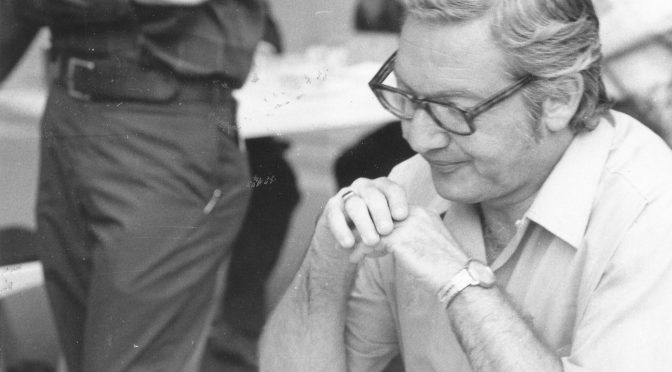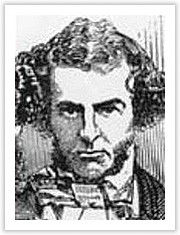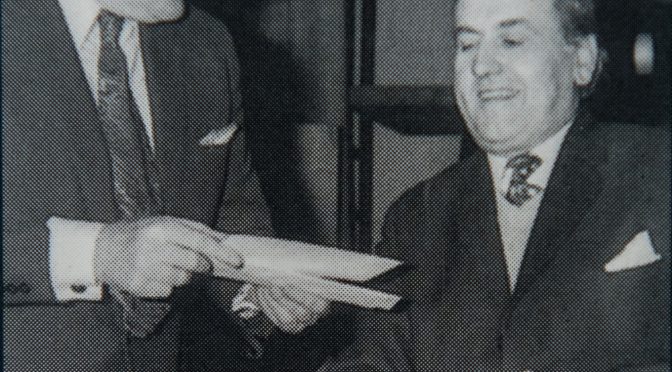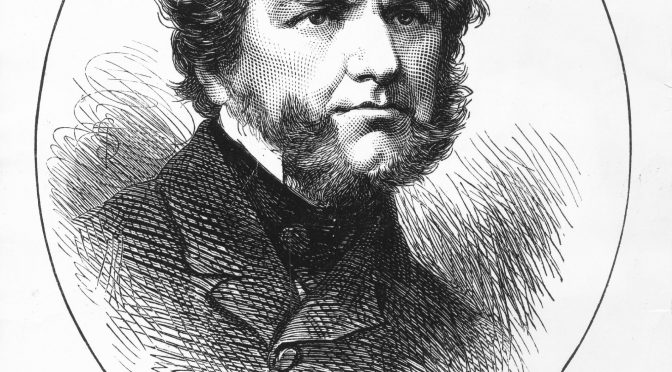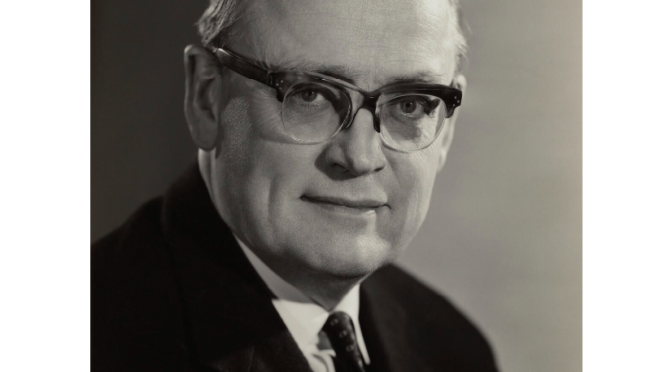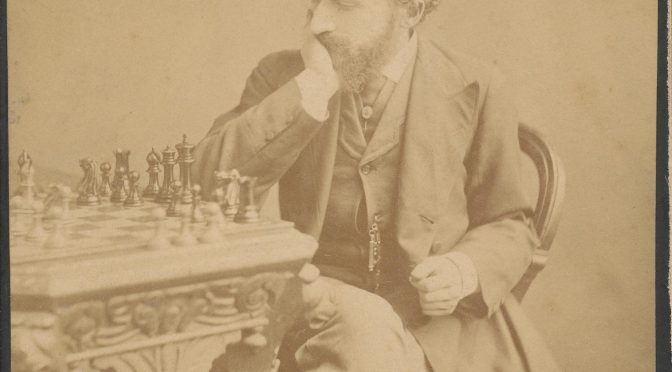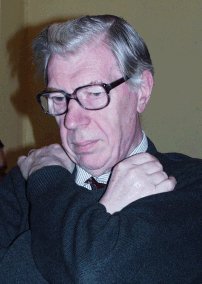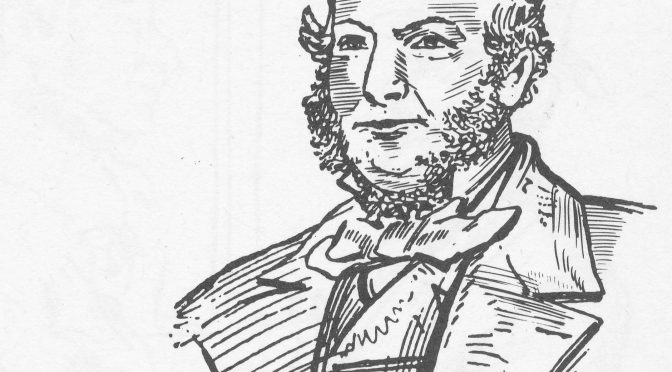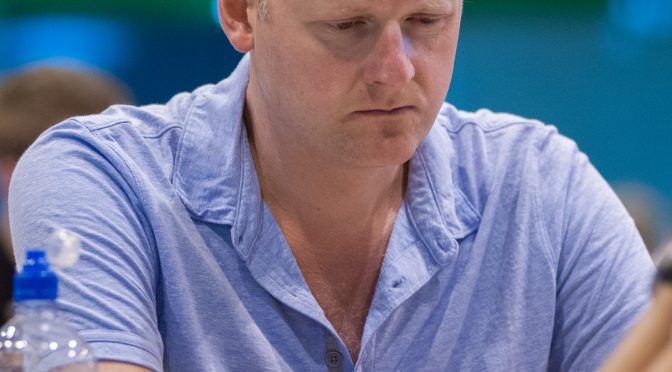Death Anniversary of GM Daniel Abraham Yanofsky OC QC (25-iii-1925 05-iii-2000)
Tag Archives: History
Remembering Marmaduke Wyvill (22-xii-1815 25-vi-1896)
Remembering Marmaduke Wyvill (22-xii-1815 25-vi-1896)
Here is his Wikipedia entry
Here is an excellent article from the superb Yorkshire Chess History web site.
Interesting article from The Northern Echo
From The Oxford Companion to Chess by Hooper & Whyld :
He was winner of second prize in the first international tournament, London 1851. He developed his chess skill in the 1840s, meeting Dubois in Rome, Kieseritzky in Paris, and many players, including Buckle, in London, His style was that of the English school, and he understood well the positional ideas of the English opening and the Sicilian Defence. In 1847 he was elected Member of Parliament for Richmond, Yorkshire, a seat he held until 1868 except for a break of two years. The London 1851 tournament consisted of a series of knock-out matches. After defeating Williams (+4-3) in the third round and losing to Anderssen ( + 2=1-4) in
the fourth and final round, Wyvill was placed second. His score against Anderssen was better than that made by other players (Kieseritzky
“1—2, Szen +2—4, Staunton +1—4), Wyvill had
proved himself one of the leading players of his time. Although he played in no more tournaments he retained an interest in the game throughout his
life.
From The Encyclopedia of Chess by Harry Golombek :
Regarded by Staunton as “one of the finest players in England”. Wyvill was primarily an enthusiastic amateur of chess, yet in his sole tournament appearance at London 1851 he took second prize behind Anderssen, but ahead of Williams, Staunton, Horwitz, Szen, etc.
In the course of this event Wyvill defeated Lowe by +2-0, Kennedy by +4-3=1 and Williams by +4-3. In the final he succumbed to Anderssen by the honourable score of +2-4=1. At the time of the tournament Wyvill was Member of Parliament for Richmond, Yorkshire.
An adherent of the same playing style as Staunton and Williams, Wyvill possessed a fine appreciation of the English Opening and the Sicilian Defence, both of which he employed to deadly effect in the London tournament.
Long after he had retired from competitive play he retained a great interest in the game and his name appears as one of the members of the General Committee in the book of the London 1883 tournament, together with his contribution to the tournament funds of the sum of £100. £100 in 1883 would be worth £2,500 today.
Here is an example of the Wyvill pawn formation :
The Wyvill formation is a name given by Tarrasch to a pawn formation with doubled pawns as shown above. This formation was not unfamiliar to Wyvill but could with more justification have
been named after Winawer who so frequently doubled his opponent’s c-pawns that this and similar formations became known as his trademark. The technique for attacking the Wyvill formation was also understood by Neumann and before him by Carl Hamppe (1814-76), the leading
Viennese player of the 1850s.
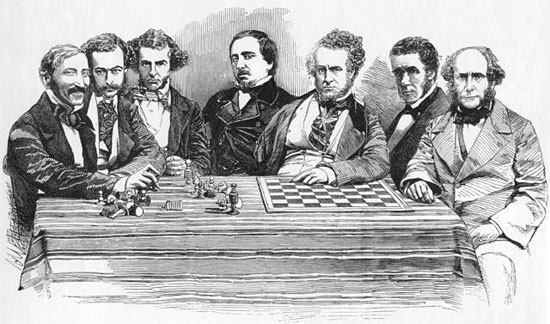
Remembering Alan Phillips (28-x-1923 24-vi-2009)
BCN remembers Alan Phillips (28-x-1923 24-vi-2009)
Here is his far too brief Wikipedia entry
From Chessgames.com :
“Alan Phillips, joint British Champion in 1954, was born in England in 1923. He was the author of Chess: 60 Years on with Caissa and Friends (Caissa Editions, 2003) and The Chess Teacher (Cadogan, 1995).”
Here is an item from the Shropshire Chess web site
Here is Alan Phillips autobiography from his own book, Chess: Sixty years on with Caissa & Friends
“Born in Stockport in 1923,I was playing pontoon in an air-raid shelter in the autumn of 1940 with a friend from our school, Stockport Grammar, when he suddenly announced that he knew a better game, being the school chess champion. Ostensibly studying for a Cambridge Scholarship with a view to reading Classics, I played about 200 games with Norman Stephens, emerging the victor perhaps because I studied Alekhine’s and Euwe’s games, obtained from the Public Library, whence I had been borrowing difficult piano works for the previous two years. When I got up to Magdalene in 1941, I found standing next to me in the University Chess Club Wykehamist James Lighthill, destined to become, arguably, our greatest applied mathematician of the second half of the last century; I played chess with him one evening a week and piano duets another, and as Match Captain and Hon.Sec. in my second year – shared top board, while now supposedly reading Italian, as a War Office scheme, and French, languages I unfortunately then considered beneath contempt, compared with the glory that was Greek.
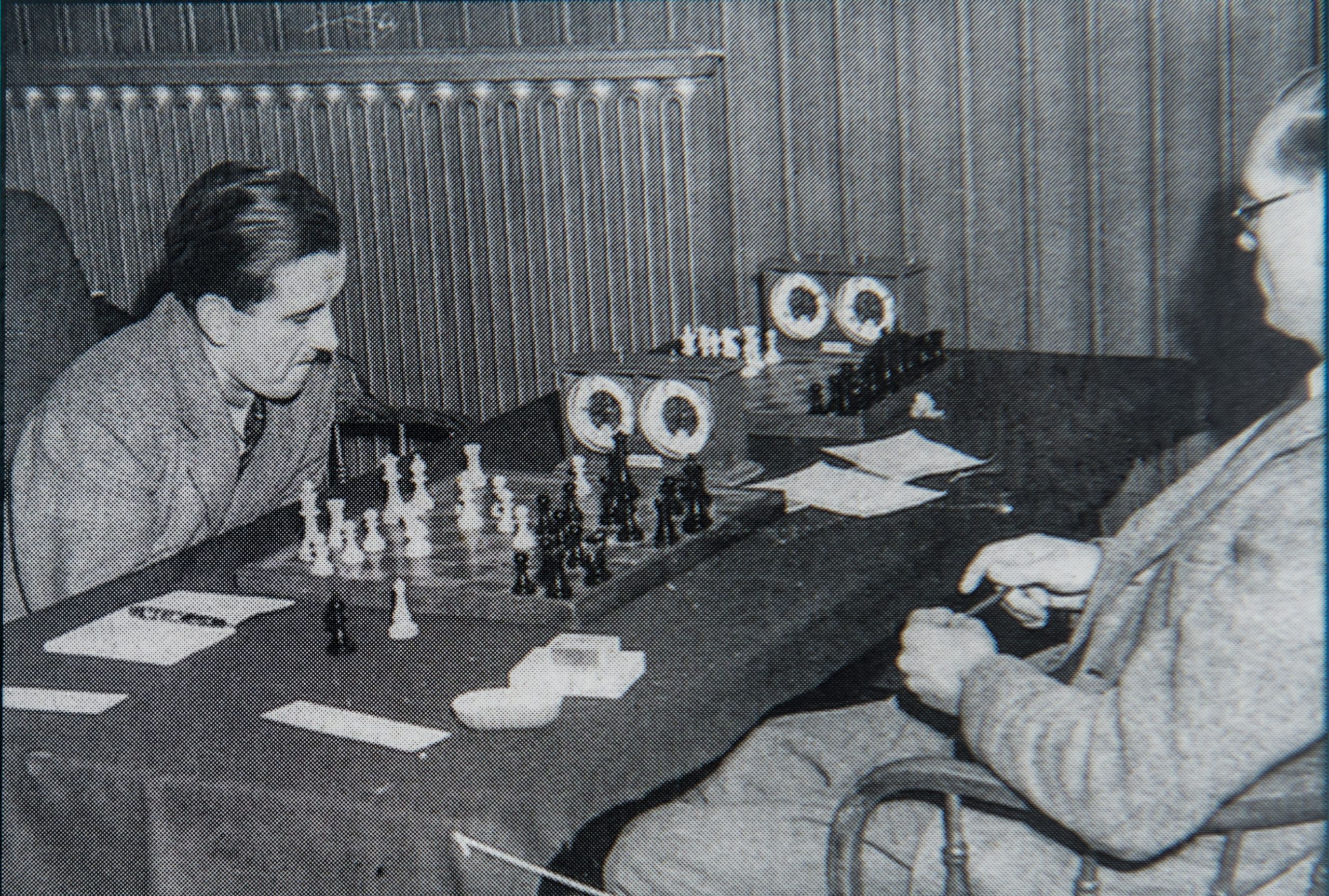
Enrolled but not commissioned – the War Office having ratted on its promise to a large bunch of first-class linguists – in the Army Intelligence Corps from August 1943 to October 1946,I spent nearly three years abroad in Sicily and Palestine, riding a motor-bike – our American equivalents in the CIC were mostly majors or colonels and rode in Cadillacs – and playing, when stationary, much music with singers and violinists, especially in Palestine, and chess with the Captain of the Harbour in Sicily, a charming moustached Neapolitan who got about three draws in 300 games, and then in Haifa, Hadera and Jerusalem chess clubs, beating the youth champion of Palestine and Aloni when he played simultaneously, but losing to Porath, and enjoying ‘skittles’ in cafes with many other players of near-master rank. Demobilised and put, like the Goons, on the Z-reserve in autumn 1946, I went back to Cambridge to read Classics Pt II and found Peter Swinnerton-Dyer, as far as I know our best number theorist of the past fifty years, waiting for me – we tied for the University Championship having begun a series of trips to Hastings with Alan Truscott, and later continued to Birmingham for the Midland Championship, which I won in 1951.
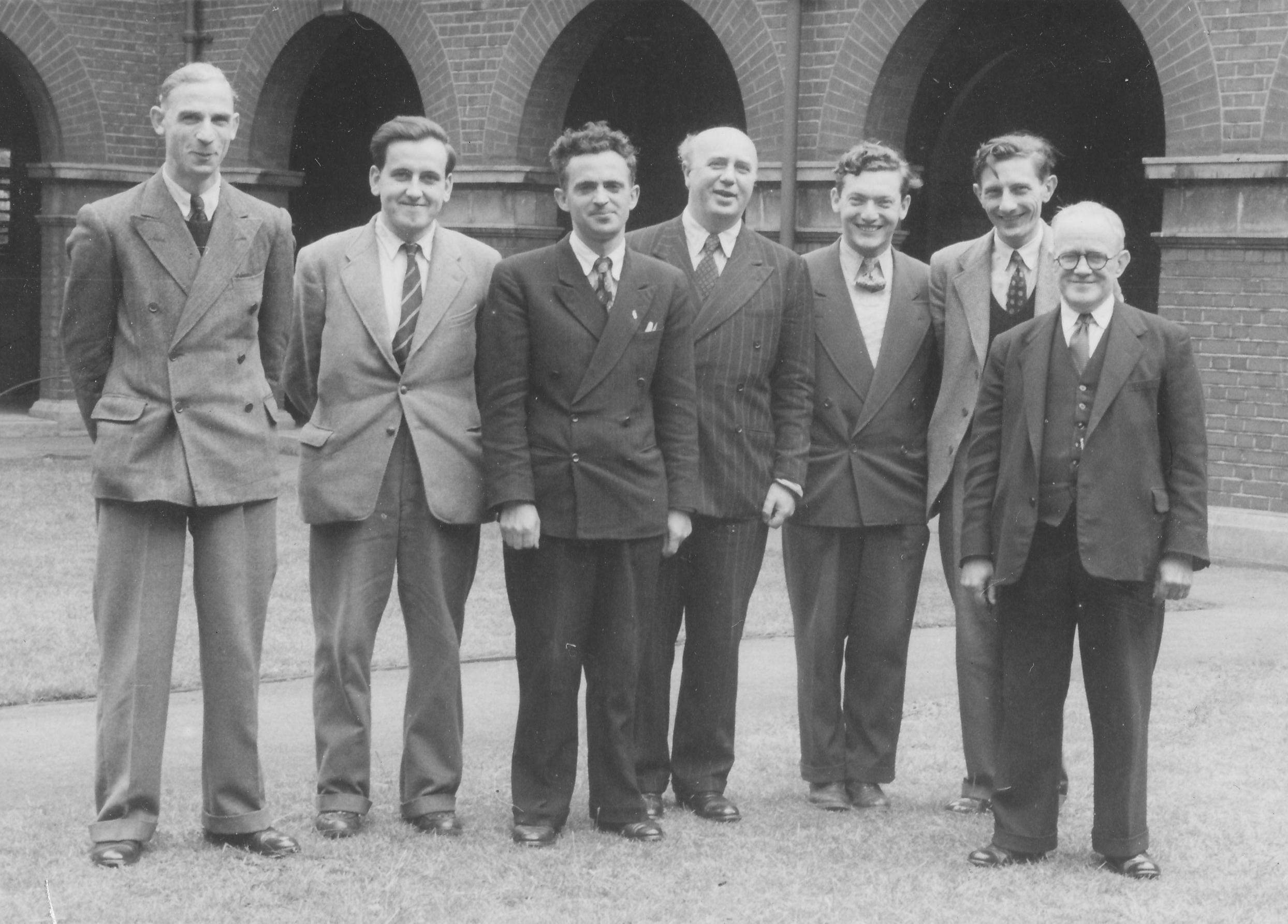
I usually won prizes in increasingly strong sections at Hastings except in two Premiers, 1950-1 and 1954-5, when my emotions were otherwise engaged, as happened in the British Championship in 1952, when, after I had beaten all the best players and scored 7/8 with three rounds to go, a girl-friend turned up and I lost my last three games, refusing a draw in round nine in a not superior position, not out of arrogance, but in order to clinch the title.
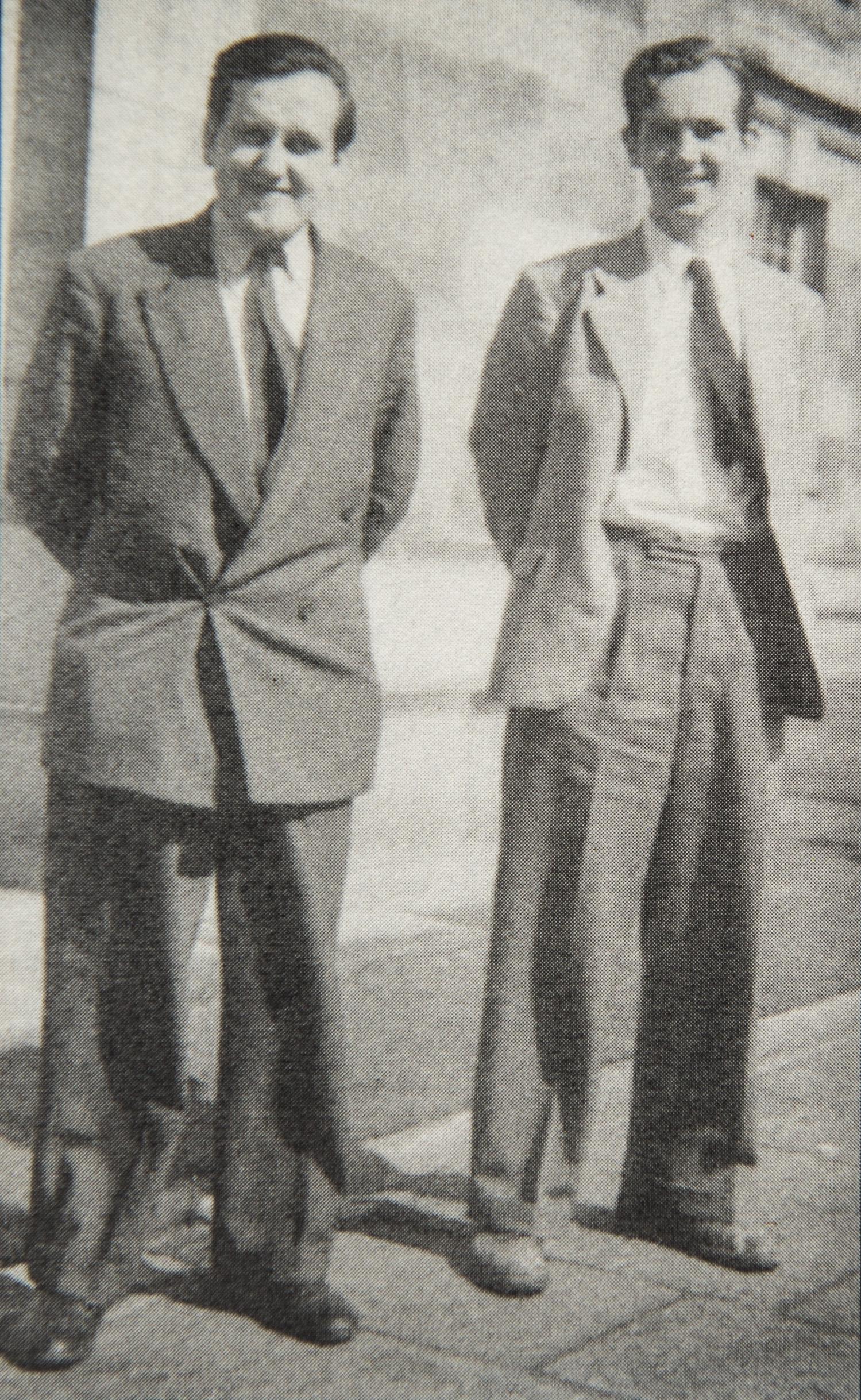
Otherwise, with one or two exceptions, I only lost to the strongest players in the British Championships I played in, i.e. 1949-55 and 1961, tying for first place at Nottingham 1954 and coming third equal in a very strong Championship at Aberystwyth 1955, which earned me a place as Board 6 on the English team at the Moscow Olympiad in 1956, where I only drew against Luxembourg, and lost to Geller, but drew in two cases from bad positions with Johner, Sanguinetti and Ghitescu.

In l96l I moved up to Derbyshire, where – though playing top board for Manchester as well as the county – having switched to Maths teaching after several years part-time study at Birkbeck and acquired offspring as well as promotion, I also started annual visits to Dartington Summer School of Music, now totalling 38 out of a possible 40, all of which made it virtually impossible for me to play in tournaments, apart from the odd visit to Hastings or fairly strong week-end tournaments, e.g. Ilford, which I won for the second time in 1973, beating Basman. My responsibilities on my return to London as Head of Charlton School in 1967, where I got Bob Wade to teach chess as part of mathematics in the Lower School, and then of Forest Hill School, where we organised many tournaments, although I played generally as top board for Kent, whom I led twice to victory in the County Championship in 1975 and 1976, meant that I had even less time for tournament chess, except at Islington and in the Challengers, so that my real heyday ended there, with a final move to a ‘quiet’ county, Shropshire – as far as chess was concerned – as Adviser for Secondary Education and Area Adviser, 1976-82, in which capacity I avoided as much paper-work as I could and taught chess in the lunch-hour to all the primary and handicapped pupils I visited. I should say most of my successes at chess have been at County Level, where I played top board for Cambridgeshire and London University, as well as the counties mentioned, and in the very strong London League, as far as I can estimate I had a success rate of some 70% in those contests. In general the games in this book, with one or two exceptions for historical or anecdotal reasons, were played at high levels, and won by the right player, not suddenly lost by a blunder, like some games published nowadays because the blunder is perpetrated by a famous player.
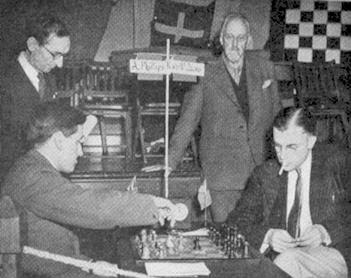
With regard to the general assessment of players and tournaments, I have only one comment “Look at the games!” When even, or especially, David Bronstein wails “They give me a number”, I think it time to end a spuriously precise system and revert to the earlier English practice or the traditional Soviet one of putting players in classes, preferably according to a sufficiently large number of results in tournaments or strong club or county matches. And when players are inhibited, when the match is won, from offering an opponent, who has played well, a draw, that is a diminution of sportsmanship, so a draw, even with Kasparov, should not count in grading. Finally the use of seconds or computers once a game is started should be
regarded as totally unsporting, and players should be put on their honour, as bridge-players are in matters of cheating, not to use them.
I should like to dedicate this book to the memory of my good friends, David Hooper, Stuart Milner-Barry, and A.R.B.Thomas, men of integrity, humour, and many other talents, who brought to their chess the same qualities of courage and sportsmanship they showed in the rest of their lives.
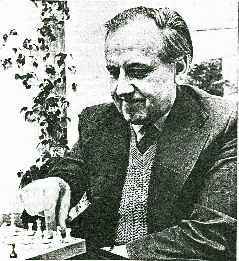
Alan Phillips
British Master, Joint British Champion 1954
Thorn Cottage, Appleton Thorn, Warrington, Cheshire
September 2003″
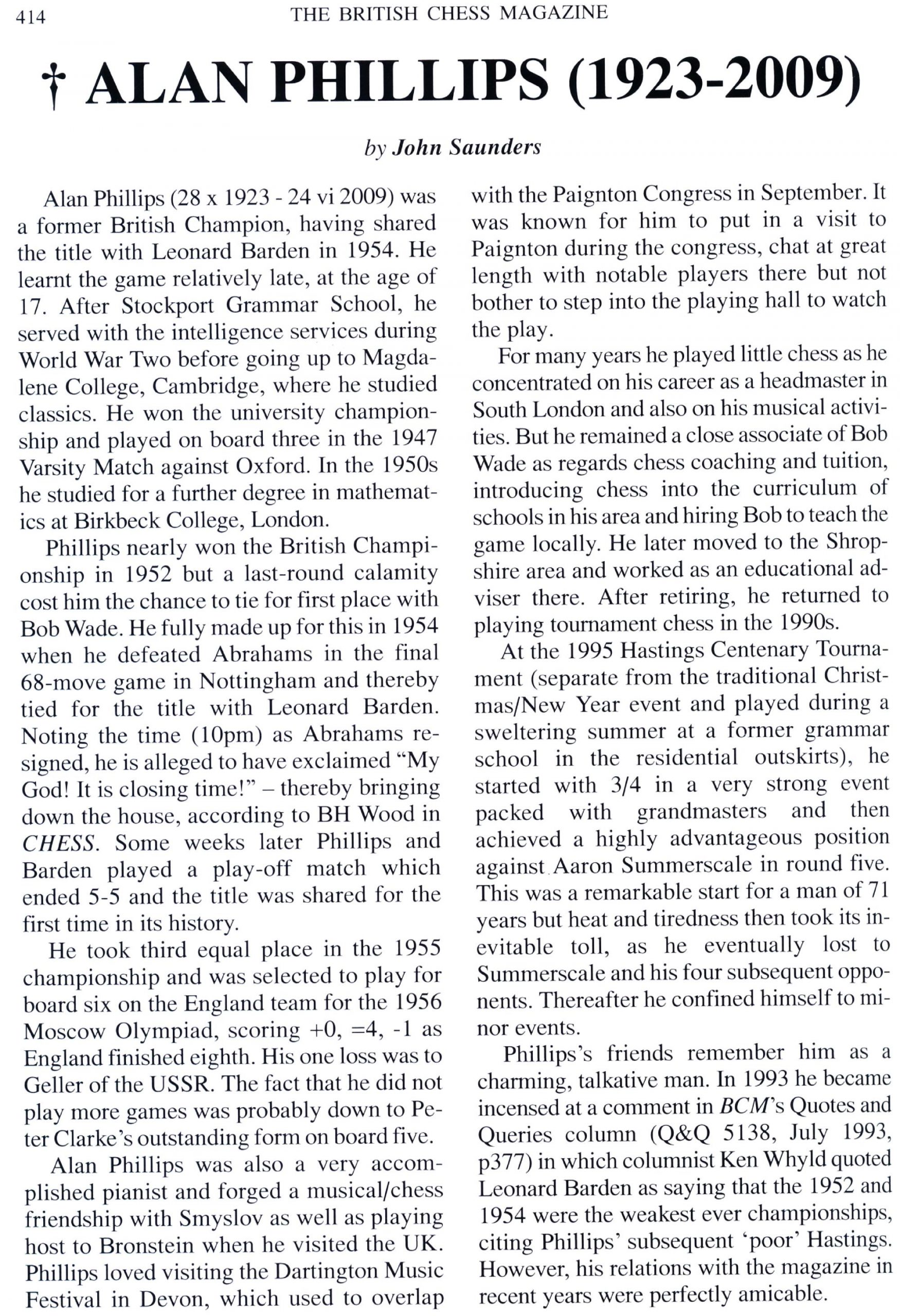
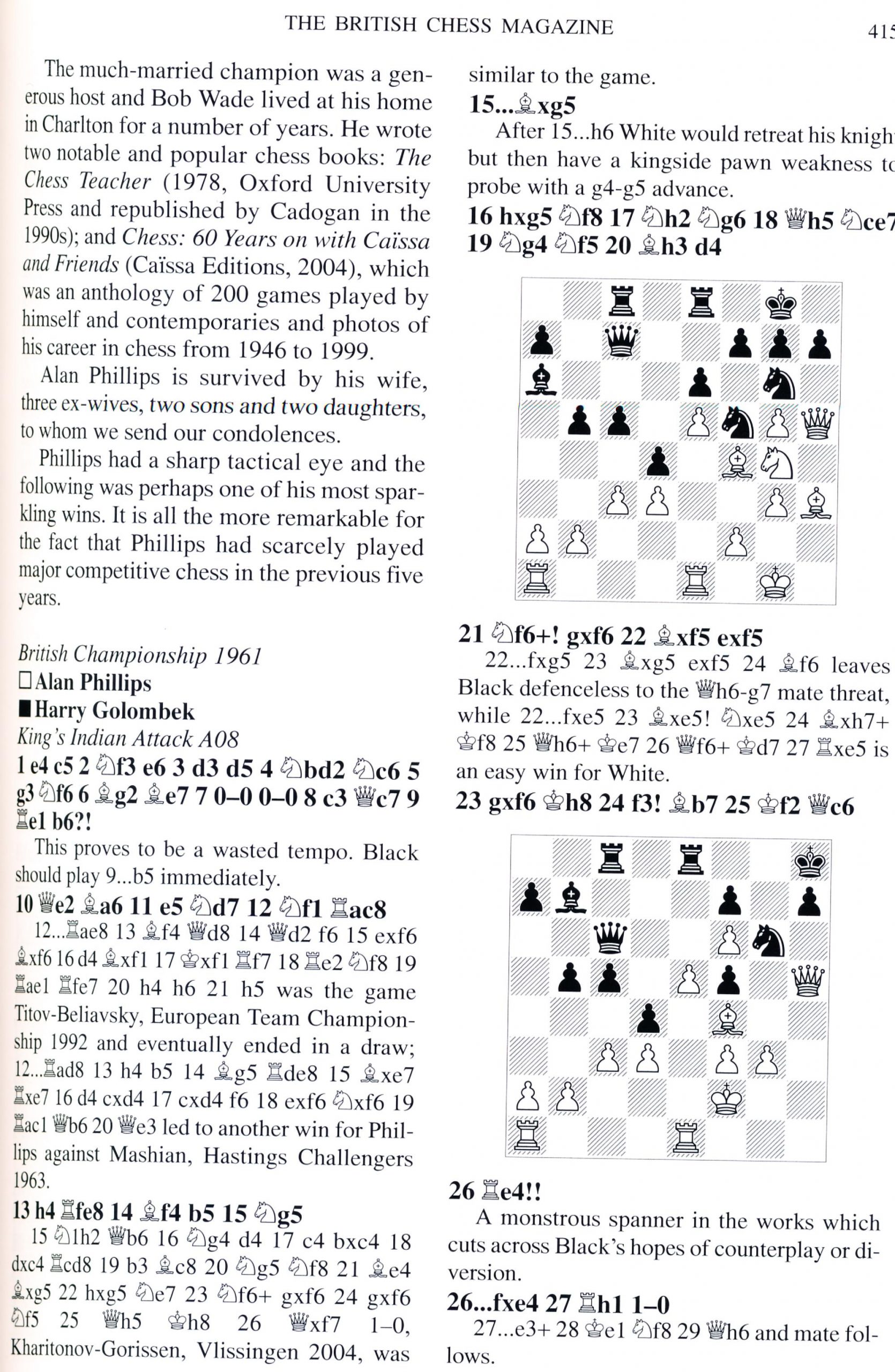
Here is his obituary from The Times of London
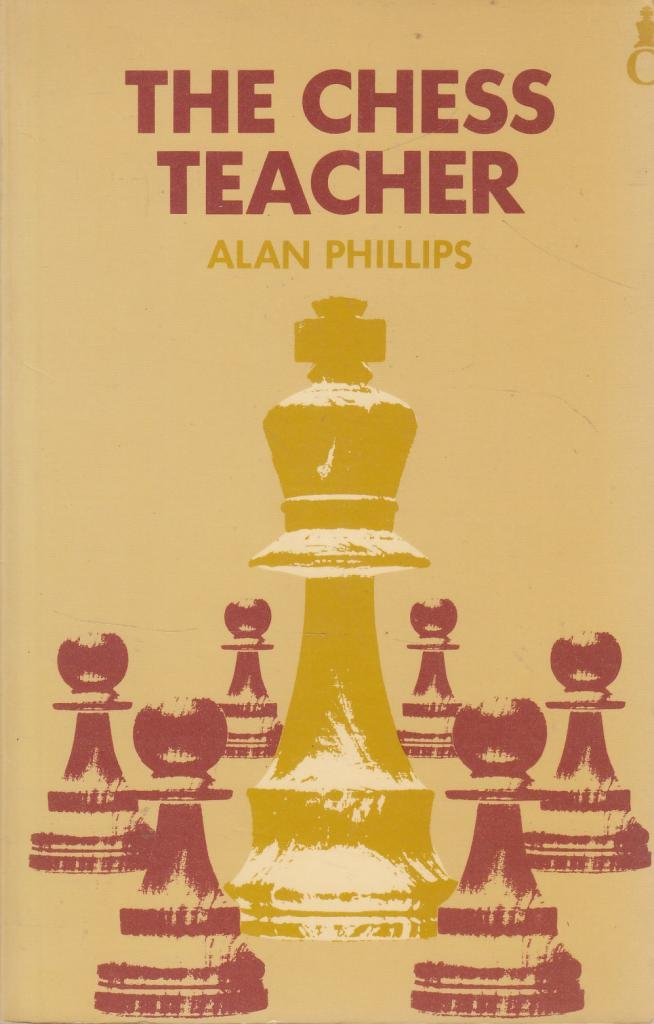
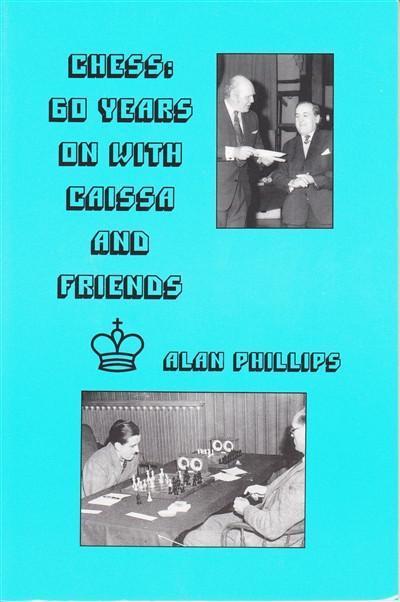
Remembering Howard Staunton (??-iv-1810 22-vi-1874)
BCN remembers Howard Staunton (??-iv-1810 22-vi-1874)
From The Oxford Companion to Chess by Hooper and Whyld :
The world’s leading player in the 1840s, founder of a school of chess, promoter of the world’s first international chess tournament, chess columnist and author, Shakespearian scholar. Nothing is known for certain about Staunton’s life before 1836, when his name appears as a subscriber to Greenwood Walkers Selection of Games at Chess , actually played in London, by the late Alexander McDonnell Esq. He states that he was born in Westmorland in the spring of 1810, that his father’s name was William, that he acted with Edmund Kean, taking the part of Lorenzo in The Merchant of Venice, that he spent some time at Oxford (but not at the university) and came to London around 1836. Other sources suggest that as a young man he inherited a small legacy, married, and soon spent the money.
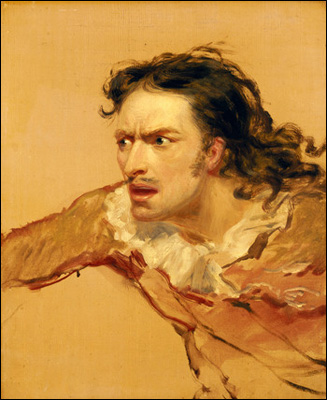
He is supposed to have been brought up by his mother, his father having left home or died. He never contradicted the suggestion that he was the natural son of the fifth Earl of Carlisle, a relationship that might account for his forename, for the Earl’s family name was Howard: but the story is almost certainly untrue, not least because in all probability Howard Staunton was not his real name. A contemporary, Charles Tomlinson (18O8- 97), writes: ‘Rumour . . . assigned a different name to our hero [Staunton] when he first appeared as an actor and next as a chess amateur.
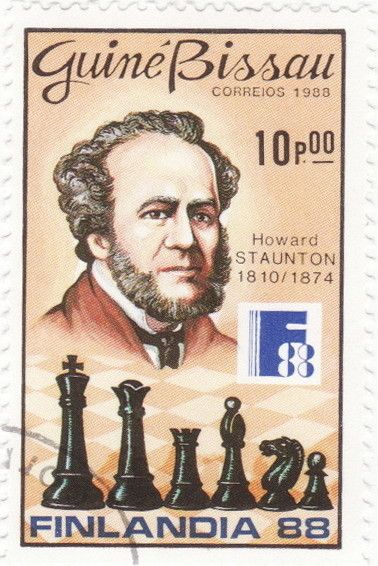
At the unusually late age of 26 Staunton became ambitious to succeed at chess; a keen patriot, his motivation may in part have sprung from a desire to avenge McDonnell’s defeat at the hands of a Frenchman. A rook player in 1836 (his own assessment), Staunton rose to the top in a mere seven years. In 1838 he played a long series of games with W. D. Evans and a match of 21 games with Alexandre in which he suffered ‘mortifying defeat’ during the early sittings; but he continued to study and to practise with great determination.
In 1840 he was strong enough to defeat H. W. Popert, a leading German player then resident in London. In the same year he began writing about the game. A short-lived column in the New Court Gazette began in May and ended in Dec. because, says G. Walker, there were ‘complaints of an overdose’. More successful was his work for the British Miscellany which in 1841 became the Chess Player’s Chronicle, England’s first successful chess magazine, edited by Staunton until 1854, Throughout 1842 Staunton played several hundred games with John Cochrane, then on leave from India, a
valuable experience for them both.
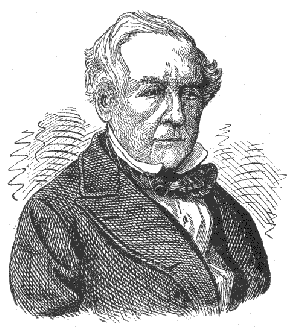
In 1843 the leading French player Saint-Amant visited London and defeated Staunton in a short contest -(+3 = 1—2), an event that attracted little attention; but later that year these two masters met in a historic encounter lasting from 14 Nov. to 20 Dec. This took place before large audiences in the famous Café de la Régence. Staunton’s decisive victory ( + 11 = 4—6) marked the end of French chess supremacy, an end that was sudden, complete, and long-lasting.
From then until the 1870s London became the world’s chess centre. In Oct. 1844 Staunton travelled to Paris for a return match, but before play could begin he became seriously ill with pneumonia and the match was cancelled.
Unwell for some months afterwards, he never fully recovered: his heart was permanently weakened. In Feb. 1845 he began the most important of his journalistic tasks, one that he continued until his death: in the Illustrated London News he conducted the world’s most influential chess column. Each week he dealt with a hundred or more letters; each week he published one or more problems, the best of the time. In 1845 he conceded odds of pawn and two moves and defeated several of his countrymen and in 1846 he won two matches playing level: Horwitz (+14=3 — 7) and Harrwitz (+ 7). In 1847 Staunton published his most famous chess book, the Chess Player’s Handbook, from which many generations of English-speaking players learned the rudiments of the game: the last of 21 editions was published in 1939. He published the Chess Players Companion in 1849.
In 1851 Staunton organized the world’s first international tournament, held in London. He also played in it, an unwise decision for one burdened with the chore of organization at the same time. After defeating Horwitz (+4=1—2) in the second round he lost to Anderssen, the eventual winner.
Moreover he was defeated by Williams, his erstwhile disciple, in the play-off for places. Later that year Staunton defeated Jaenlsch ( + 7=1 — 2) and scored +6 = 1—4 against Williams, but lost this match because he had conceded his opponent three
games’ start. In 1852 Staunton published The Chess Tournament, an excellent account of this first international gathering. Subsequently he unsuccessfully attempted to arrange a match with Anderssen, but for all practical purposes he retired from the game at this time.
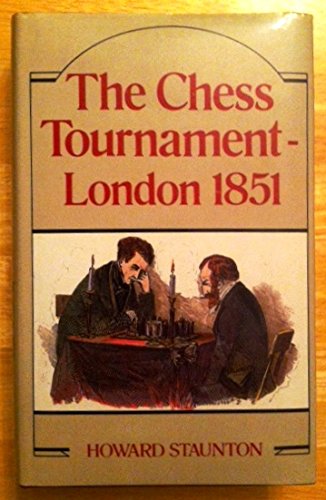
Among his many chess activities Staunton had long sought standardization of the laws of chess and, as England’s representative, he crossed to Brussels in 1853 to discuss the laws with Lasa, Germany’s leading chess authority. Little progress was made at this time, but the laws adopted by FIDE in 1929 are substantially in accordance with Staunton’s views. This trip was also the occasion of an informal match, broken off when the score stood +5=3-4 in Lasa’s favour. Staunton took the match seriously, successfully requesting his English friends to send him their latest analyses of the opening.
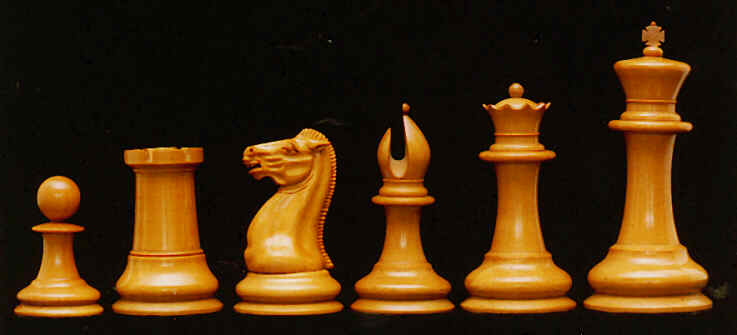
Staunton had married in 1849 and, recognizing his new responsibilities, he now sought an occupation less hazardous than that of a chess-player. In 1856. putting to use his knowledge of Elizabethan and Shakespearian drama, he obtained a contract to prepare an annotated edition of Shakespeare’s plays. This was published in monthly instalments from Nov. 1857 to May 1860, a work that ‘combined commonsense with exhaustive research’. (In 1860 the monthly parts ready for binding in three volumes were reissued, in 1864 a four-volume reprint without illustrations was printed, and in 1978 the original version was published in one volume.) Staunton, who performed this task in a remarkably short period, was unable to accept a challenge from Morphy in 1858: his publishers would not release him from his contract. After the proposal for a match was abandoned Frederick Milnes Edge (c. 1830-82), a journalist seeking copy, stirred up a quarrel casting Staunton as the villain. Morphy unwisely signed some letters drafted by Edge, while Staunton, continuously importuned by Edge, was once driven to make a true but impolitely worded comment about Morphy. Generally however these two great masters behaved honourably, each holding the other in high regard; but Edge’s insinuations unfairly blackened Staunton’s reputation.
Subsequently Staunton wrote several books, among them Chess Praxis (1860) and the Great Schools of England (1865), revised with many additions in 1869. At the end of his life he was working on another chess book when, seized by a heart attack, he died in his library chair.
Staunton was no one’s pupil: what he learned about chess he learned by himself. For the most part he played the usual openings of his time but he introduced several positional concepts. Some of these had been touched upon by Philidor, others were his own: the use of the ranch mo for strategic ends, the development of flank openings specially suited to pawn play. He may be regarded as the precursor of the hypermodern movement, the Staunton system the precursor of the Reti opening. In his Chess Players Companion Staunton remarks that after 1 e4 e5 Black’s game is embarrassed from the start, a remark anticipating Breyer’s ideas about the opening by more than half a century, Fischer wrote in 1964: “Staunton was the most profound opening analyst of all time. He was more theorist than player but none the less he was the strongest player of his day. Playing over his games I discover that they are completely modern.
Where Morphy and Steinitz rejected the fianchetto. Staunton embraced it. In addition he understood all the positional concepts which
modern players hold so dear, and thus with Steinitz must be considered the first modern player.
Tall, erect, broad-shouldered, with a leonine head, Staunton stood out among his fellows, walking like a king’. He dressed elegantly, even ostentatiously, a taste derived perhaps from his
background as an actor. G. A. Macdonnell describes him: “… wearing a lavender zephyr outside his frock coat. His appearance was slightly gaudy, his vest being an embroidered satin, and his scarf gold-sprigged with a double pin thrust in, the heads of which were connected by a glittering chain . . .’ A great raconteur, an excellent mimic who could entertain by his portrayals of Edmund Kean, Thackeray, and other celebrities he had met, he liked to hold the stage, ‘caring for no man’s anecdote but his own’. He could neither understand nor tolerate the acceptance of mediocrity, the failure of others to give of their best.
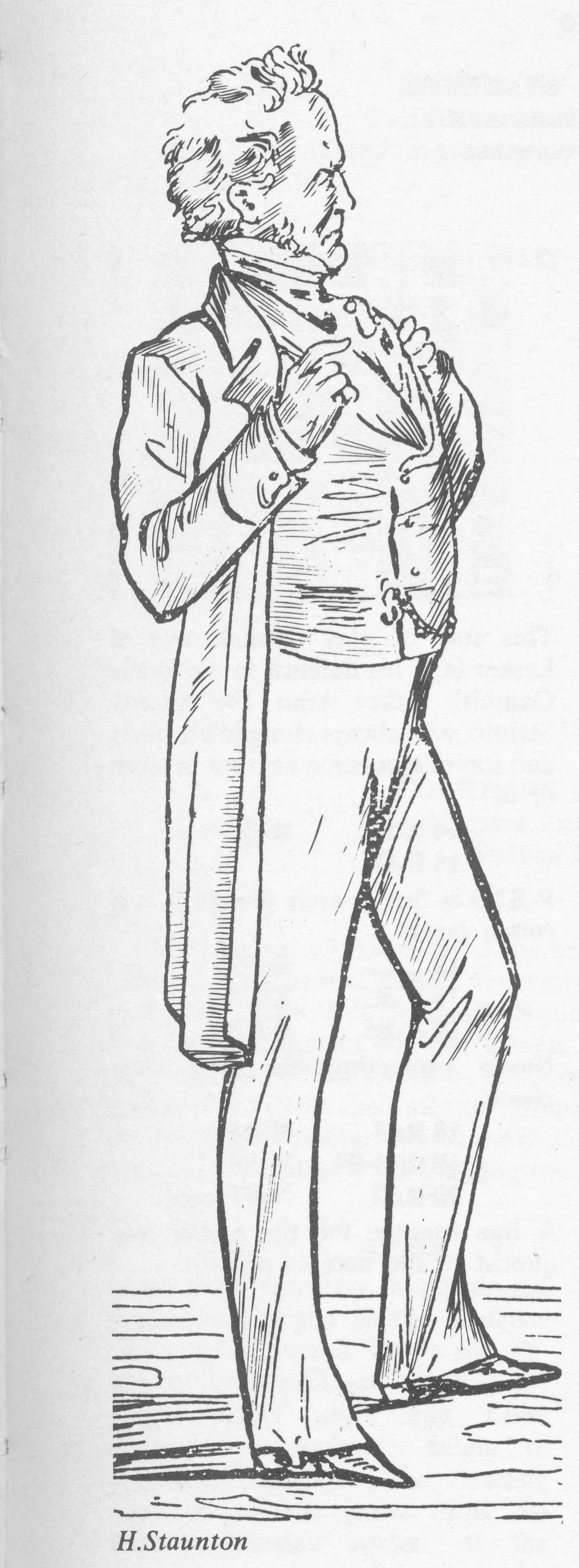
A man of determined opinions, he expressed them pontifically, brooking little opposition. Always outspoken, he often behaved, writes Potter, ‘with gross unfairness towards those whom he disliked, or from whom he suffered defeat, or whom he imagined to stand between himself and the sun’; ‘nevertheless’, he continues, ‘there was nothing
weak about him and he had a backbone that was never curved with fear of anyone.’ Widely disliked, Staunton was widely admired, a choice that would have been his preference. Reminiscing in 1897, Charles Edward Ranken (1828-1905) wrote: “With great defects he had great virtues; there was nothing mean, cringing, or small in his nature, and, taking all in all, England never had a more worthy
chess representative than Howard Staunton.
R. D. Keene and R. N. Coles Howard Staunton the English World Chess Champion (1975) contains biography, 78 games, and 20 parts of games.
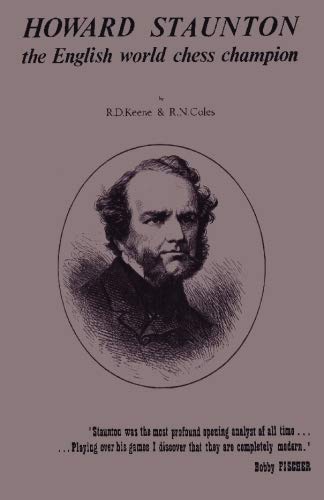
The Staunton Defence has remained a completely playable gambit versus the Dutch Defence :
Here is his Wikipedia entry
A curious article about Staunton
From British Chess Magazine, Volume CXIX (119, 1999), Number 11 (November), page 584 :
“English Heritage unveiled a blue plaque to Howard Staunton, arguably Britain’s greatest 19th century chess player, in London on September 28. The unveiling took place at 117 Landsdowne Road, London W11, and was performed by Barry Martin, secretary of the Staunton Society, on behalf of English Heritage. Staunton lived with his wife at 117 Lansdowne Road between 1871 and 1874. He died at 27 Elgin Crescent later that year. The weather was favourable and a good crowd (including several grandmasters) was able to enjoy proceedings. BBC television covered the event for their lunch-time and evening news programme.”
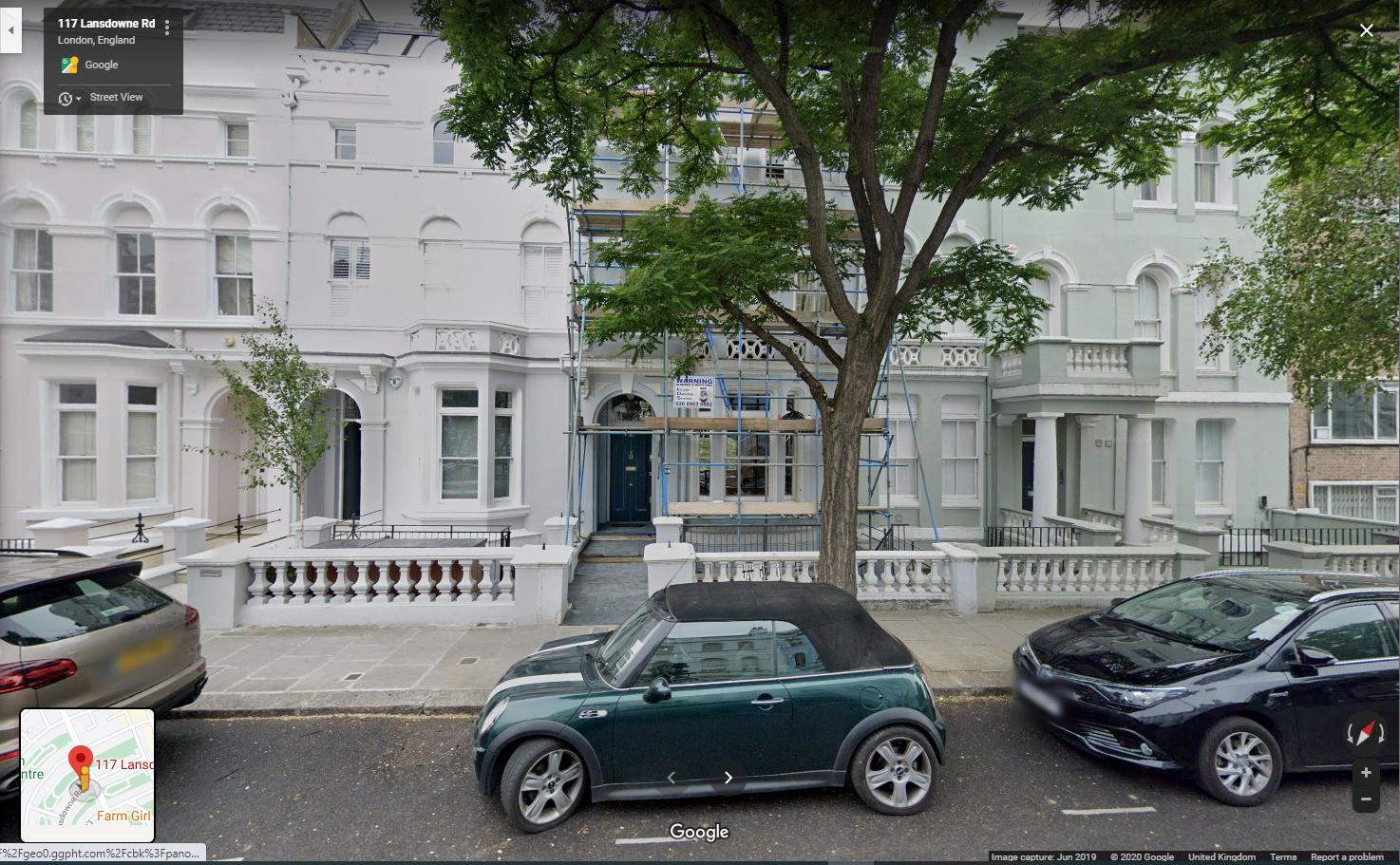
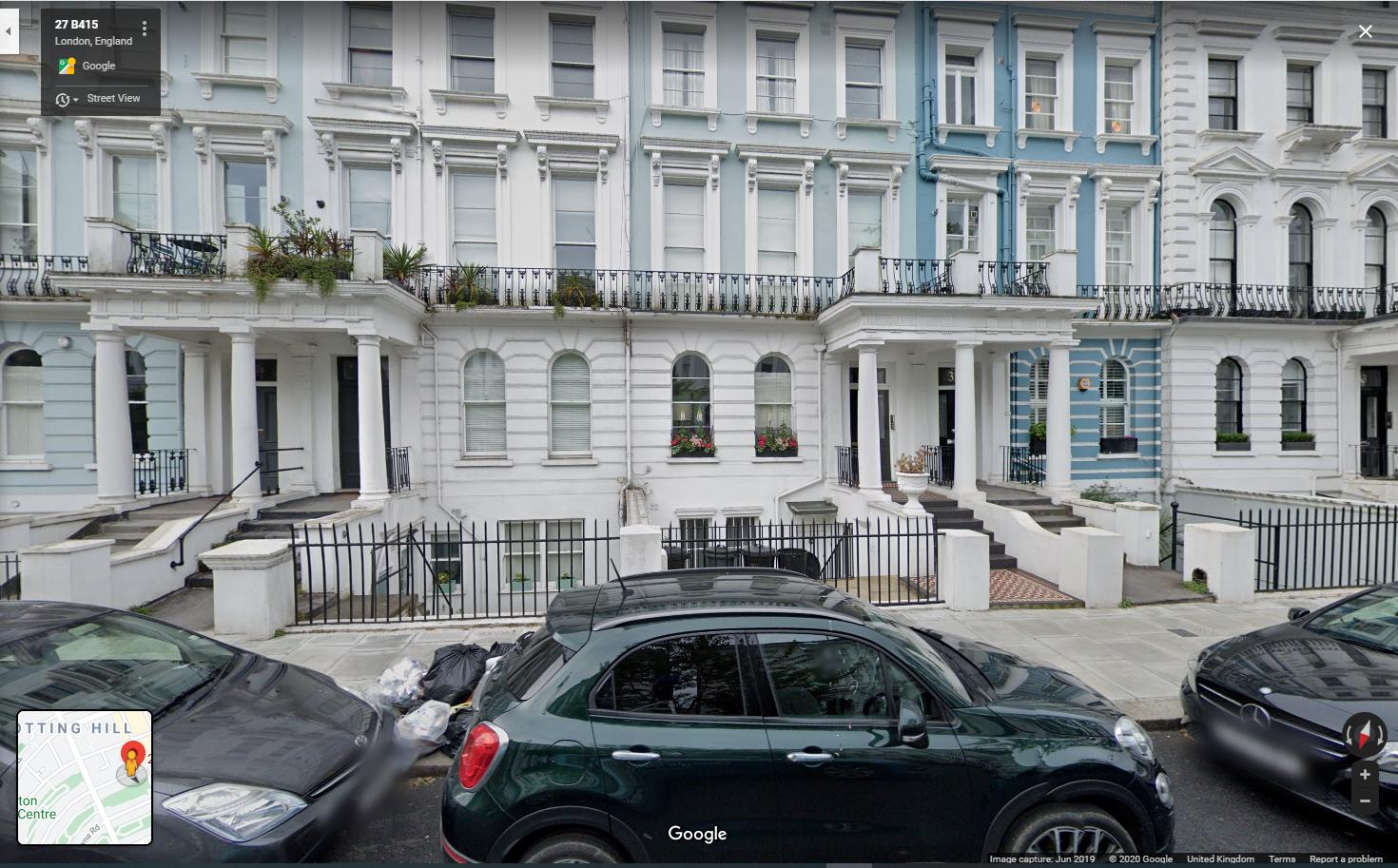
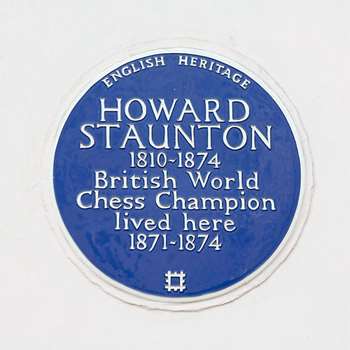
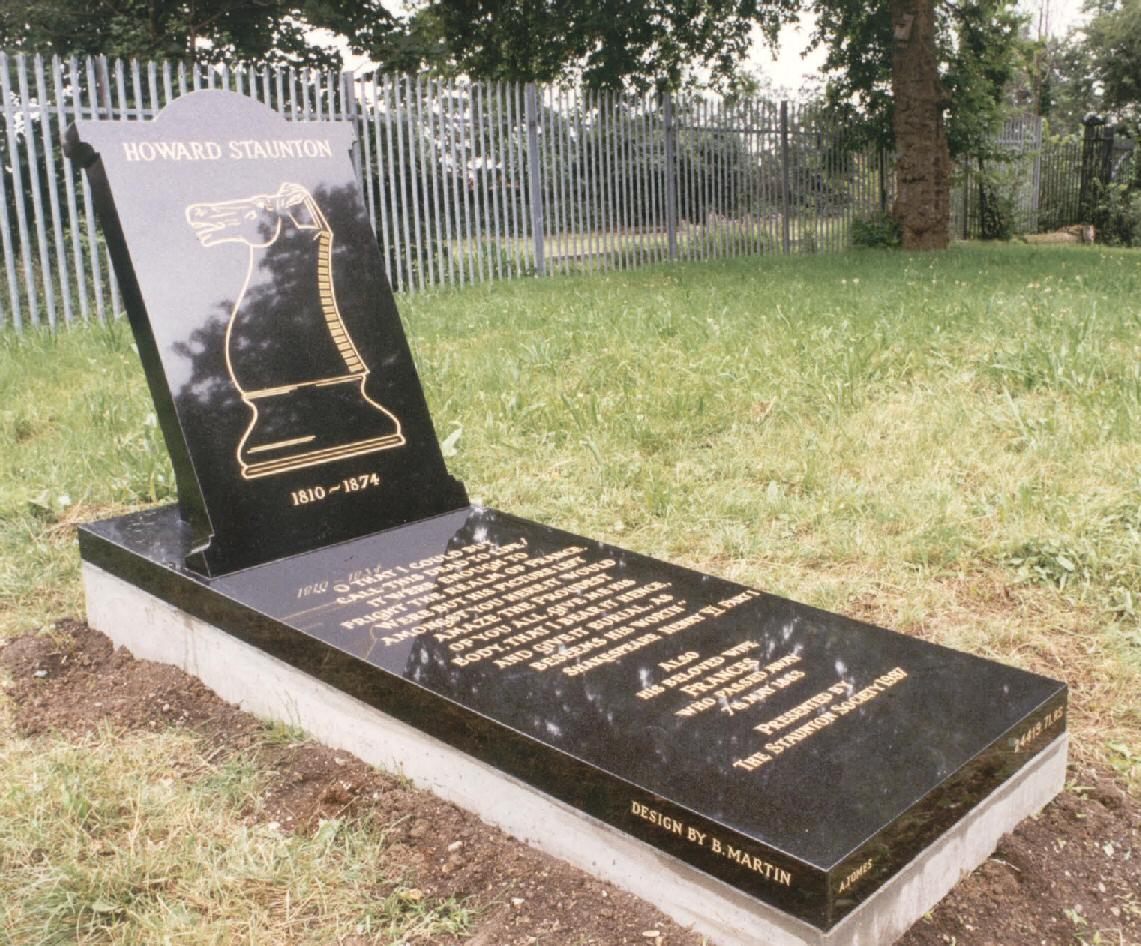
Remembering Sir Richard Clarke KCB OBE (13-viii-1910 21-vi-1975)
BCN Remembers Sir Richard Clarke KCB OBE who passed away on June 21st 1975.
According to chess-poster.com : “Clarke died in the University College Hospital, in London, on 21 June 1975 and was cremated at Golders Green three days later. He was survived by his wife Brenda Pile (married in 1950, née Skinner) and their three sons.”
One of those sons is Charles Rodway Clarke along with his brothers Mark G and Timothy Rodway.
Richard William Barnes Clarke was born on August 13th, 1910 in Basford, Derbyshire. The birth was registered in Ilkeston in the district of Erewash. His parents were a secondary and technical school schoolmaster of science, William Thomas Clarke and Helen Rodway Clarke (née Barnes). Richard was baptised on October 1st 1910 in St. Lawrence (Anglican) Church in Heanor, Derbyshire.
The 1911 census records the family living at “Iona” which was a modest property in Fletcher Street in Heanor which had six rooms. Richard was seven months old and he had a three year old sister, Stella Helen Clarke. The family retained a nineteen year old domestic servant, Ada Mary Brown who has been born in Codnor, Derbyshire.
Richard was educated at Christ’s Hospital, London followed by Clare College, Cambridge. At University he studied mathematics specialising in statistics. He was ranked at the sixth “wrangler“. Subsequently he was awarded the Frances Wood Prize by the Royal Statistical Society.
In 1944 Richard was awarded the OBE for his work as Planning Officer for the Ministry of Production followed by Companion of the Bath in 1951 for his work as Under Secretary at HM Treasury and in 1964 he was made Knight Commander of the Bath for his work as Second Secretary at HM Treasury.
According to chess-poster.com : “He was commonly known as Otto Clarke” and according to his son Mark the nickname “Otto” was possibly because of Clarke’s “forceful” personality was considered Germanic. According to Sir Sam Brittan, “it was because his round glasses and the bridge over the nose looked like OTTO.”
From The Oxford Companion to Chess by Hooper & Whyld :
Creator of the British system of grading. He gave up active chess after leaving Cambridge University where he played second board between C.H.O’D. Alexander and Jacob Bronowski.
At first a financial journalist (one of the two who created the Financial Times Index), he became, at the outbreak of the Second World War, a temporary civil servant, remaining to become one of the most distinguished of them, and to receive a knighthood.
According to Arpad E. Elo in “Ratings of Chessplayers Past and Present” : “In the chess world, rating systems have been used with varying degrees of success for over twenty-five years. Those which have survived a share a common principle in that they combine the percentage score achieved by a player with the rating of his competition. They use similar formulae for the evaluation of performance and differ mainly in the elaboration of the scales. The most notable are the Ingo (Hoesskinger 1948), the Harkness (Harkness 1956), and the British Chess Federation (Clarke 1957) systems. These received acceptance because they produced ranking lists which generally agreed with the personal estimates made by knowledgeable chessplayers.”
Here is an article in full reproduced from British Chess Magazine, Volume LXXXIII, Number 2, February, 1963, pages 49 -53 :
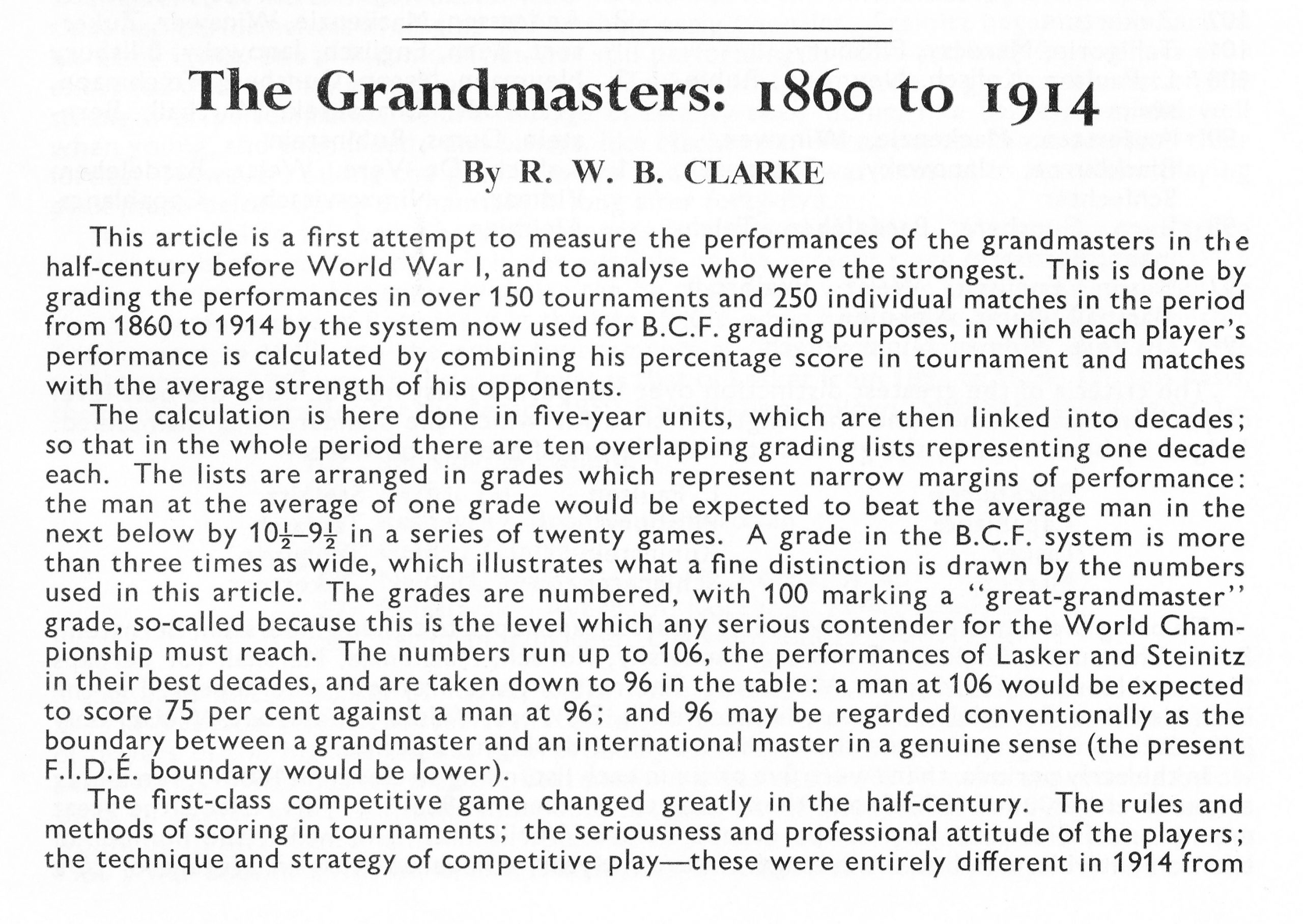
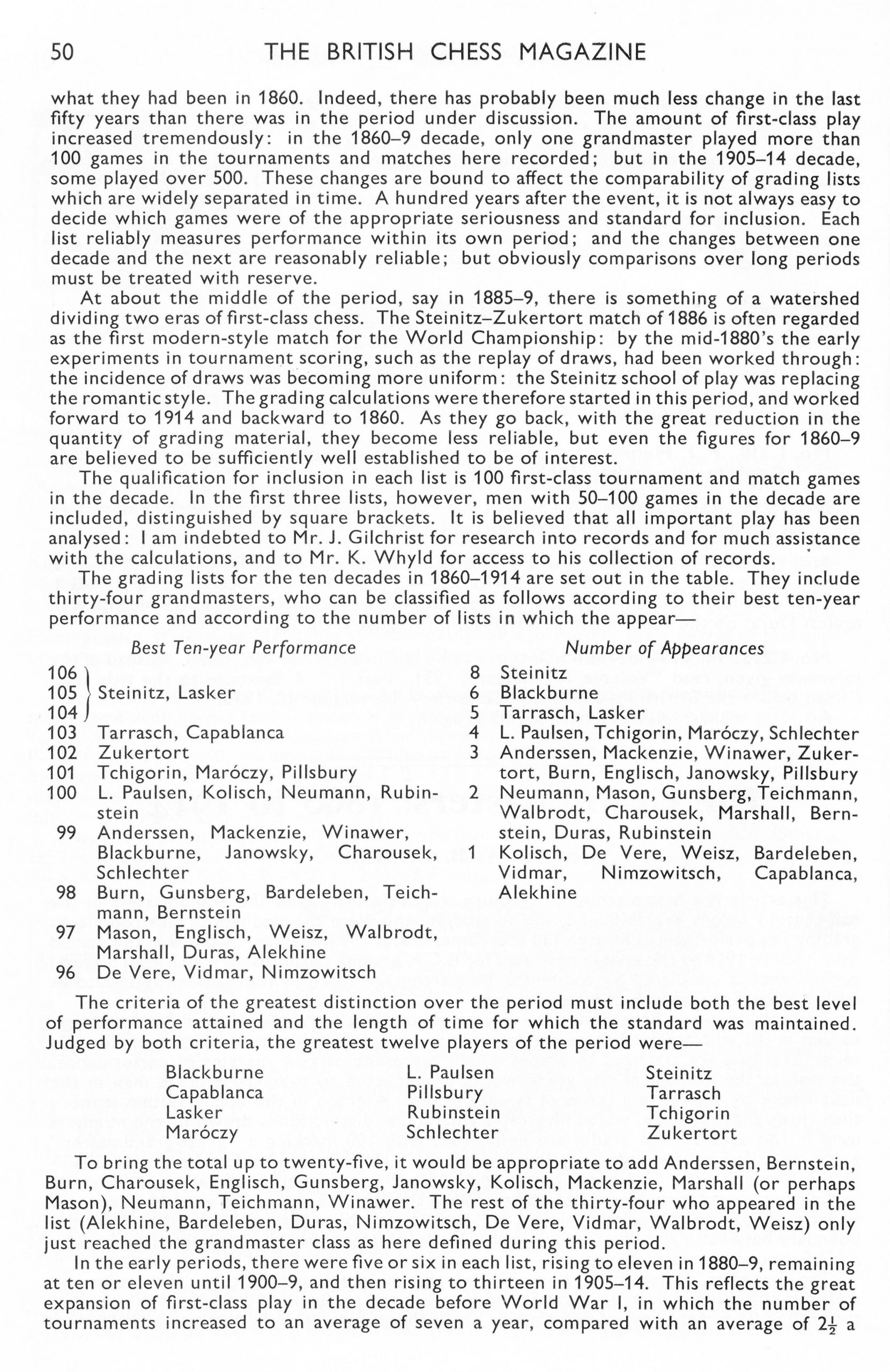
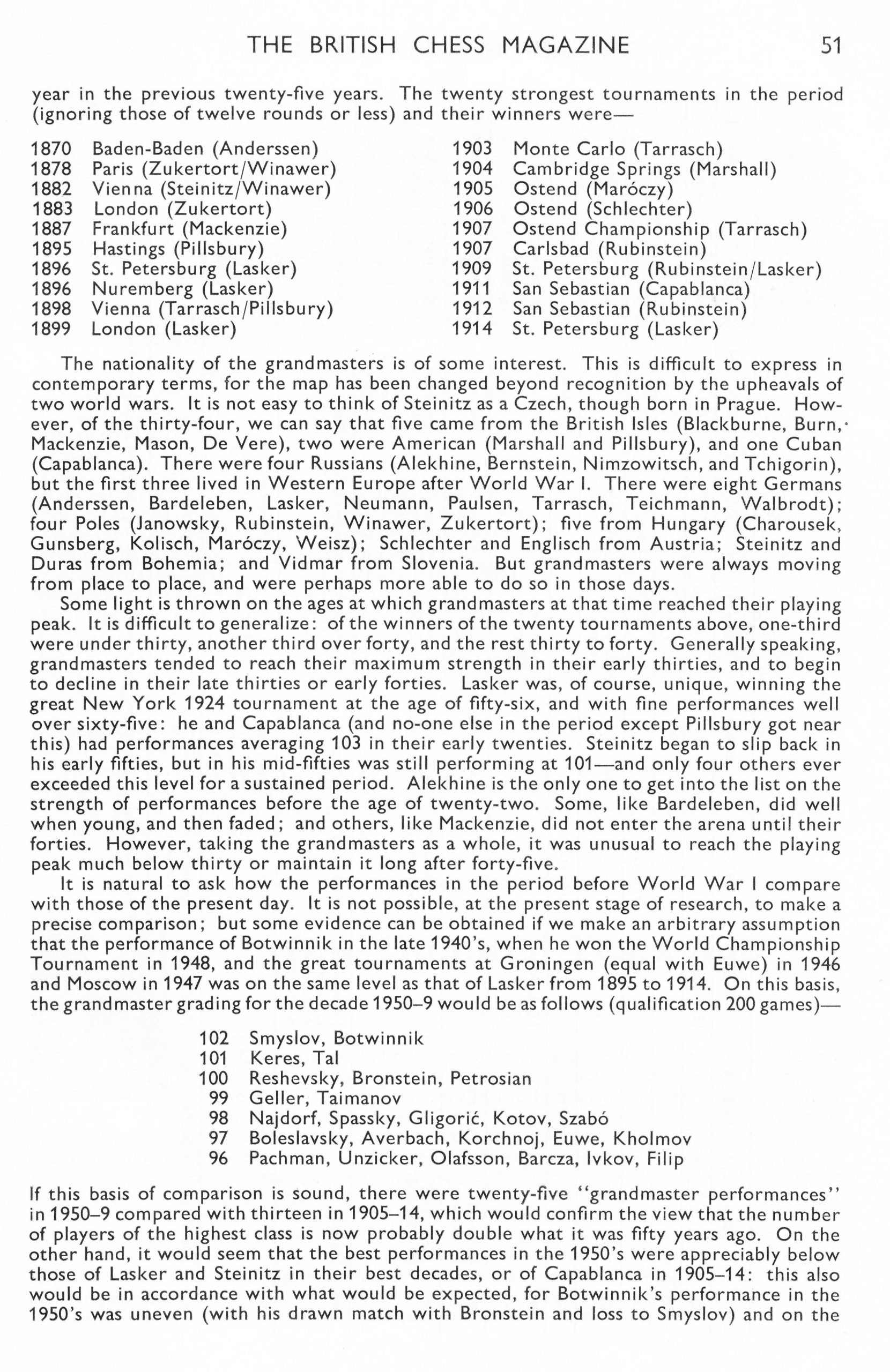
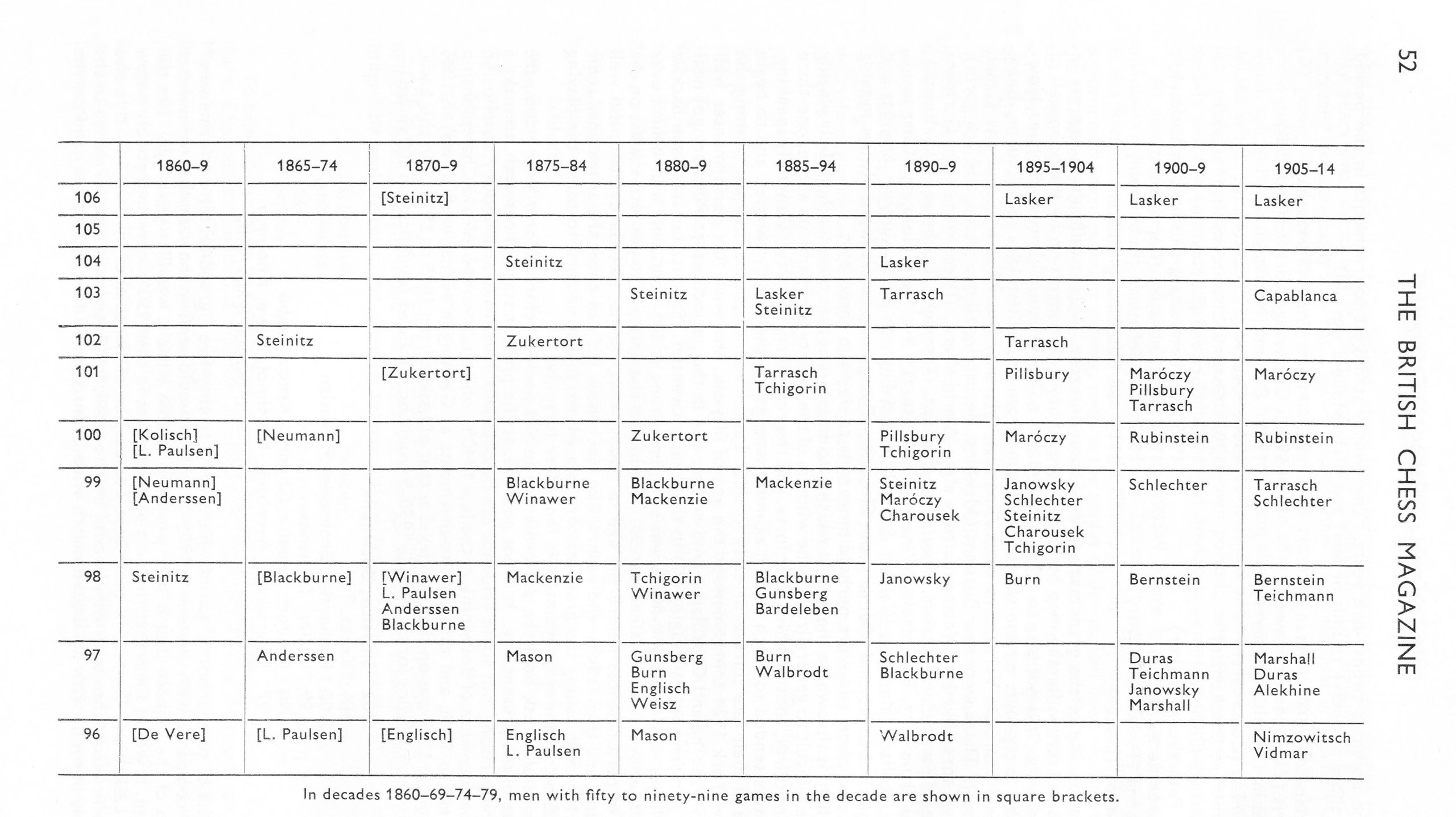
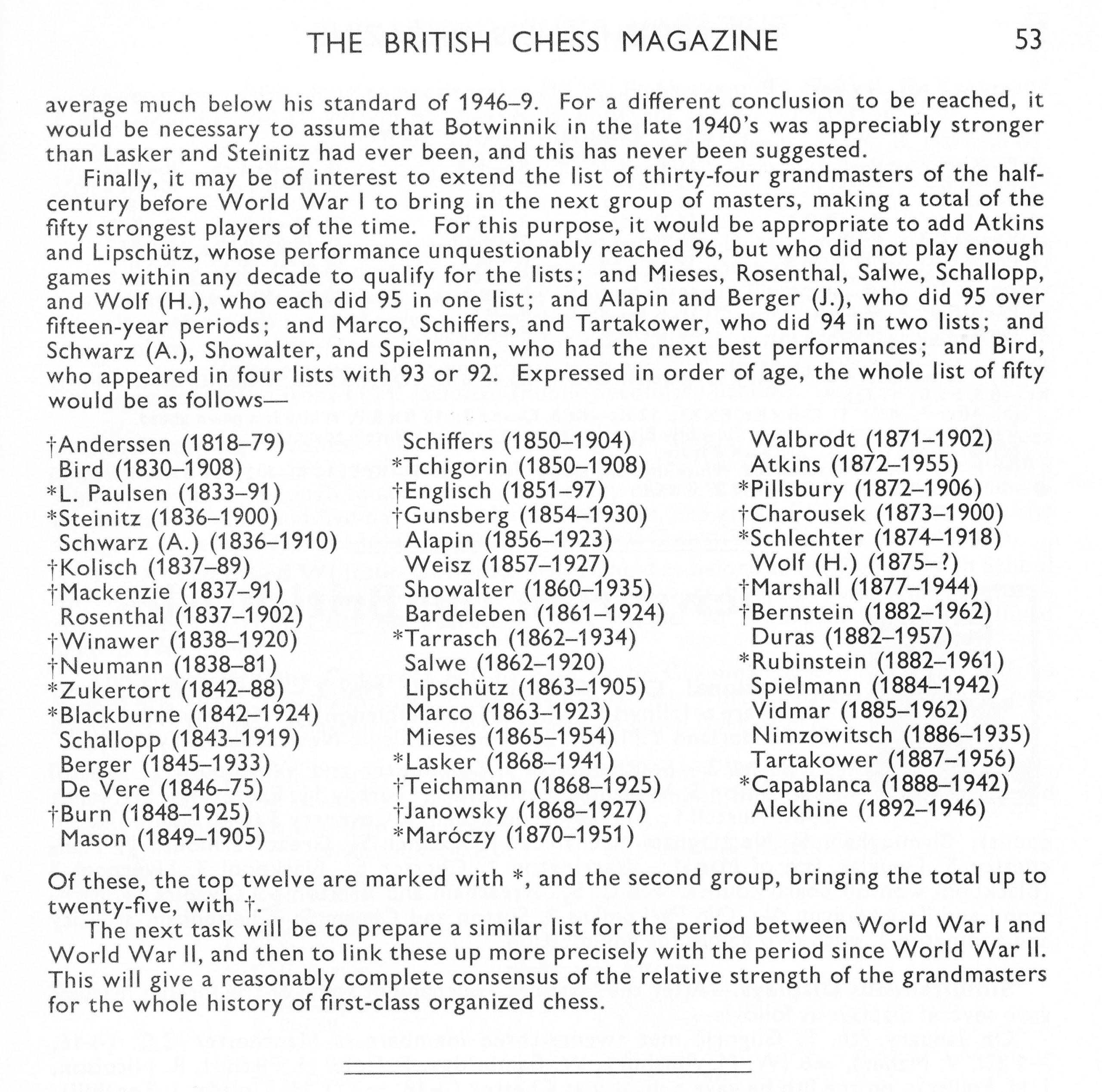
The June 1975 issue of British Chess Magazine announces his passing and promises that a tribute would follow : it never did.

Here is his Wikipedia entry
Here is a small article from chess-poster.com
Here is detail about the Clarke Grading System
and more about chess ratings systems in general
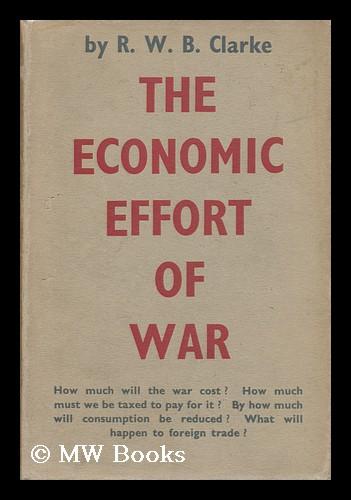
Remembering Johannes Zukertort (07-ix-1842 20-vi-1888)
BCN Remembers Johannes Hermann Zukertort (07-ix-1842 20-vi-1888)
From the July 2012 editorial in British Chess Magazine we had this report :
“Johann Hermann Zukertort’s (1842-1888) grave was rededicated last month in London’s crowded Brompton Cemetery, largely thanks to an initiative led by Stuart Conquest. The resting place of one of the leading players of the nineteenth century was recorded but the grave had fallen into terrible disrepair. See BCM 1888, pp.307-8 and p.338-340 for the obituary of the great man. We read that his death ‘was terribly sudden’, that he was buried on 26th June, 1888 and that ‘several pretty wreaths were laid on the coffin …’”
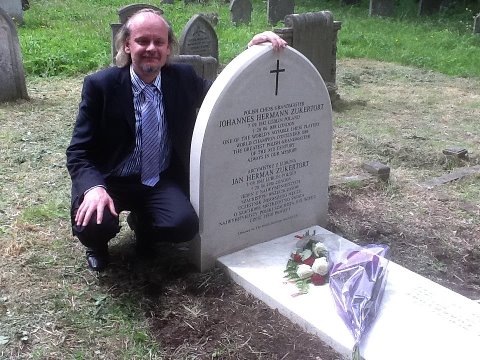
From The Oxford Companion to Chess by Hooper & Whyld :
Polish-born Jew, from about 1871 to 1886 second player in the world after Steinitz. From about 1862 to 1866 Zukertort, then living in Breslau, played many friendly games with Anderssen, at first receiving odds of a knight but soon meeting on even terms. They played two matches in Berlin, Zukertort losing the first in 1868 (+3 = 1—8) and winning the second in 1871 (+5 — 2).
In 1872 a group of London players, anxious to find someone who could defeat Steinitz, paid Zukertort 20 guineas to come to England. He came, he stayed, but he failed to beat Steinitz.
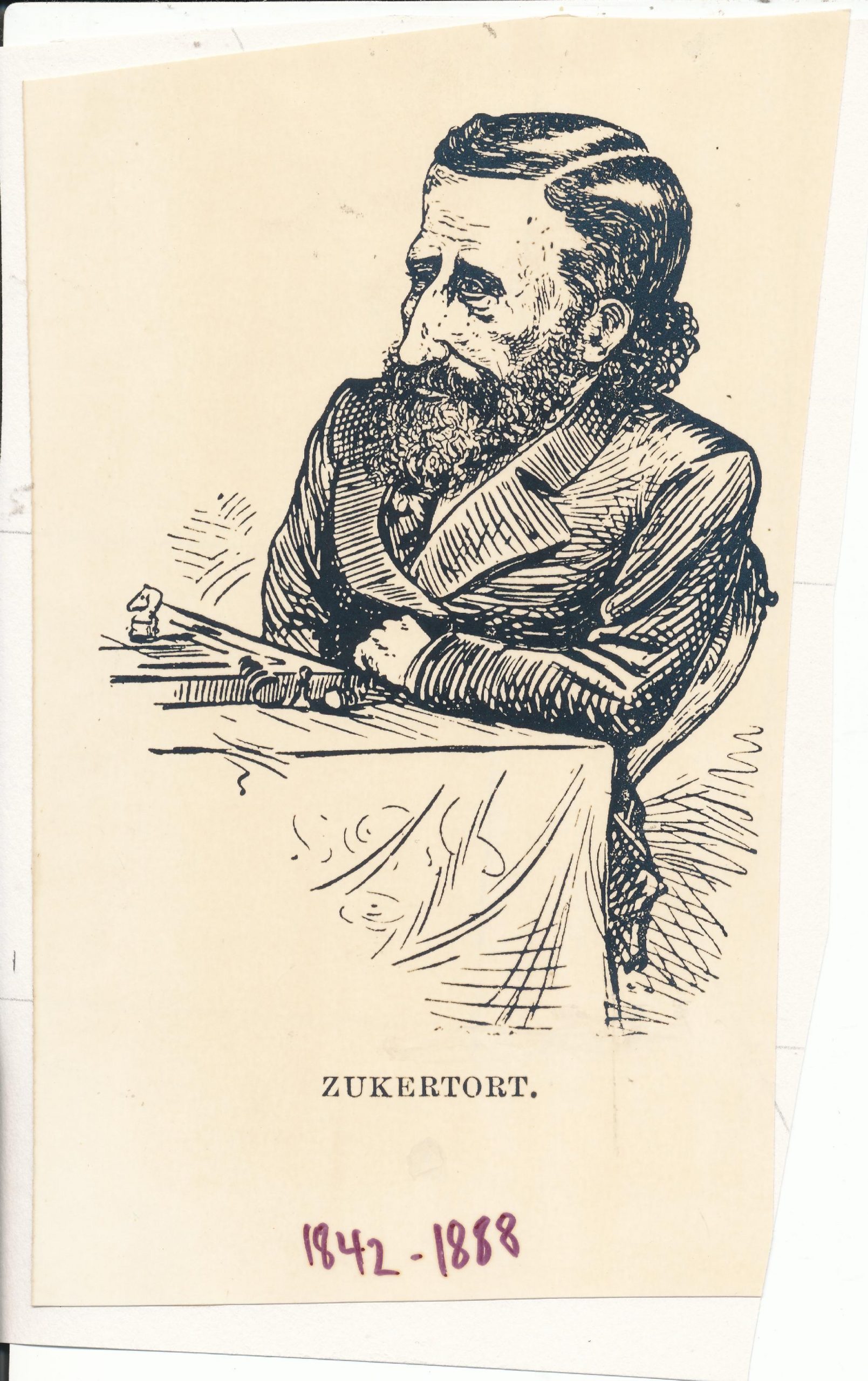
Zukertort took third place after Steinitz and Blackburne at London 1872, the strongest tournament in which He had yet played, and later in the year was decisively beaten by Steinitz in match play ( + 1=4—7). Zukertort settled in London as a professional player.
He won matches against Potter in 1872 ( + 4=8—2), Rosentalis in 1880 ( + 7=11-1), and Blackburne in 1881 ( + 7=5-2), He also had a fair record in tournament play: Leipzig 1877, second equal with Anderssen after L. Paulsen ahead of Winawer:-* Paris 1878, first ( + 14=5—3) equal with Winawer ahead of Blackburne (Zukertort won the play-off, +2=2); Berlin 1881, second alter Blackburne ahead of Winawer; and Vienna 1882, fourth equal with Mackenzie after Steinitz, Winawer, and Mason.
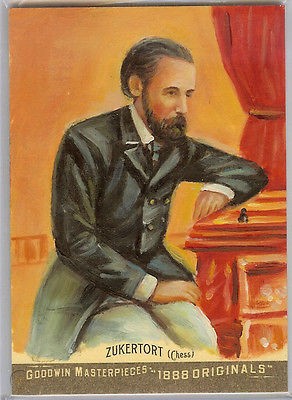
The world’s nine best players were among the competitors in the double-round London tournament of 1883 when Zukertort achieved his greatest victory: first prize (+22—4) three points ahead of Steinitz, the second prize winner, in seven weeks and a day he played 33 games (seven draws were replayed) and towards the end he relieved the strain by taking opiates, the cause of his losing his last three games. This victory led to the first match for the world championship, a struggle between him and Steinitz, USA, 1886. After nearly ten weeks of relentless pressure by his opponent Zukertort lost (- 1 – 5=5 —10) i winning only one of the last 15 games. His spirit crushed, his health failing, he was advised to give up competitive chess, but there was nothing else he could do. I am prepared, he said, l to be taken away at any moment.’ Seized by a stroke while playing at London’s famous coffee-house, Simpson’s Divan, he died the next day.
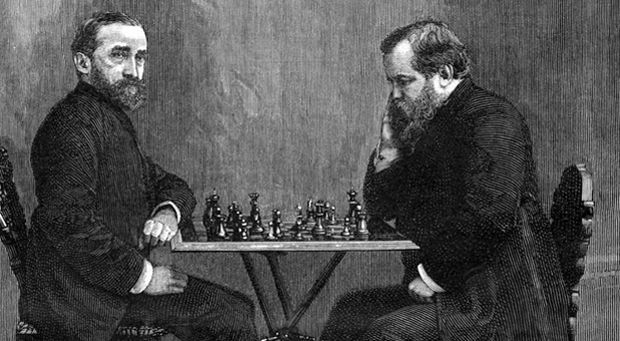
Like Anderssen, his teacher, Zukertort had a direct and straightforward style, and in combinative situations he could calculate far ahead. Having a prodigious memory he could recollect at will countless games and opening variations, a talent which may have limited his vision. (For his match with Steinitz in 1872 his extensive opening preparations brought him only one win. Steinitz was the better player in unfamiliar situations.) As an annotator and analyst Zukertort was outstanding in his time, and much of his work in these fields appeared in the Chess Monthly which he and Hoffer edited from 1879 to 1888.
Zukertort read widely and what he read became, as he said ‘iron-printed in my head’. Hoffer recalls Zukertort holding a visitor from India spellbound with a convincing and detailed account of a tiger-hunt, although it must have been outside his experience. Zukertort’s own account of his early life was reported in the Norfolk News, 16 Nov. 1872, He claimed aristocratic (Prussian and Polish) descent, and fluency in nine languages. “He learnt one language to read Dante, another to read Cervantes, and a third, Sanskrit, to trace the origin of chess,’ Besides the study of theology, philology, and social science he is also an original thinker on some of the problems that perplex humanity , ” He is ‘an accomplished swordsman, the best domino player in Berlin, one of the best whist players living, and so good a pistol shot that at fifteen paces he is morally certain to hit the ace of hearts . , , has found time to play 6,000 games of chess with Anderssen alone … a pupil of Moscheles, and in 1862-6 musical critic of the first journal in Silesia … is also a military veteran … he served in the Danish, in the Austrian, and in the French campaign , , , he was present at the following engagements, viz, in Denmark, Missunde, Duppcl, and Alsen; in Austria, Trauienau, Koniginhof, Kdniggratz (Sadowa), and Blumcnau; in France, Spicheeren, Pange (Vionville), Gravelotte, Noisevillc, and all other affairs before Metz, Twice dangerously wounded, and once left for dead upon the field, he is entitled to wear seven medals besides the orders of the Red Eagle and the Iron Cross, . . . He obtained the degree of M.D. at Breslau in 1865, having chiefly devoted his attention to chemistry under Professor Bunsen at Heidelberg, and to physiology at Berlin under Professor Virchow … is now on the staff of Prince Bismarck’s private organ, the Allgemeine Zetiling, and is chief editor of a political journal which receives “officios’” from the Government at Berlin. He is . . . the author of the Grosses Schach Handbuck and a Leitfaden , and , . . was for several years editor of the Neue Berliner Schachzeitung. ’ There is some truth in the last sentence: he was co-author of the books, co-editor of the chess magazine.
A. Olson, J. H. Zukertort (1912) is a collection of 201 games with Swedish text.
From The Encyclopedia of Chess by Anne Sunnucks
“One of the leading players of the last century, Zukertort was born in Riga on 7th September 1842. His father was a Prussian and his mother a Pole. When he was 13, his family moved to Breslau. After studying chemistry at Heidelberg and physiology at Berlin, he obtained his doctorate of medicine at Breslau University in 1865. He served as a doctor with the Prussian Army during his country’s wars against Denmark, Austria and France and was decorated for gallantry.
Zukertort was a man of many talents. He had a prodigious memory, and it was said that he never forgot a game he had played. He spoke 11 languages, and he was an excellent pistol shot and fencer but it was journalism and chess that he chose for a career.
Zukertort learned to play chess when he was 18, and two years later he met Anderssen and became his pupil. Within three years he had become one of the strongest players in North Germany. He first drew attention to himself as a blindfold simultaneous player. In 1868, he gave a simultaneous blindfold display against seven players in Berlin. This was his first blindfold performan@, and it was so successful that he gave several further performances, almost immediately increasing the number of his opponents to 12.
Between 1867 and 1871, he was joint editor with Anderssen of the Neue Berliner Schachzeityng. In 1871 he played a match against Anderssen, probably the second strongest player in the world at that time, and beat_him by 5-2. Following this victory, he was invited to take part in the 1872 London Tournament. He came 3rd and, probably because he was disappointed at his result, immediately challenged – the winner, Steinitz, to a match for the title of World Champion. Steinitz had claimed this title after his victory over Anderssen in 1866. Zukertort lost the match by + 1 -7 :4.
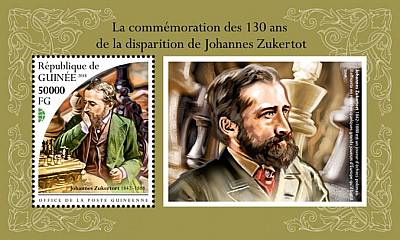
Meanwhile, Zukertort had decided to make England his permanent home and became a naturalised Englishman in l878.
Zukertort tied with Anderssen for 2nd prize in a master tournament in Leipzig in 1877, but his first major international event was Paris 1878, when he tied for lst place with Winawer and won the play-oft. In 1880 he beat the French champion, Rosenthal, in a match 7-1, and the following year he beat Blackburne +7 -2 – 5. The greatest performance of his career came in 1883, when in the London Tournament he won lst prize, three points ahead of Steinitz, who came 2nd. His victory was certain two weeks before the end of the tournament when he had a score of 22 out of 23. With victory secure, he went on to lose his last three games, the strain having proved too much.
Zukertort was advised by his doctor to give up serious chess but he refused and within a short time left England for a chess tour of the United States, Canada and Europe. On his return from this tour, he left almost immediately to play a second match for the world title against Steinitz. This took place in 1886. Zukertort was in no fit state of health
for such a match, and it proved too much for him. He lost by +5 -10 =5 and returned to England a physical and nervous wreck.
Zukertort never fully recovered. He continued to play chess, but with little success. He died at Charing Cross Hospital on 20th June 1888 of cerebral haemorrhage, following a game at Simpson’s ‘Divan’.”
From The Encyclopedia of Chess by Harry Golombek :
“One of the most talented players of all time and possibly an English Prussian Polish Jewish grandmaster, the antecedents and early career of Zukertort are shrouded in mystery, a mystery that was the more complete in that the only account of these comes from Zukertort with a lack of corroboration so great that perhaps he really was telling the truth. Whatever the truth may be it is certain that he was a great chess player, one of those who carry with them the aura of certain genius. According to Zukertort, then, he was born in Lublin of mixed Prussian and Polish descent and his mother was the Baroness Krzyzanovska. The name of his mother sounds incredibly like an invention of W. C. Fields and it is difficult to believe that his father’s name, Zukertort, was not Jewish.
Again according to Zukertort he studied chemistry at Heidelberg and physiology at Berlin, claiming to have obtained his doctorate of medicine at Breslau University. His versatility was astonishing. He spoke nine languages including Hebrew and was acquainted with several more. He had been a soldier, having fought in several campaigns for Prussia against Austria, Denmark and France; and once had been left for dead on the battlefield.
A music critic, editor of a political paper, on the staff of Bismarck’s newspaper, the Allgemeine Zeitung; gifted with a memory so colossal that he never forgot a game he played; a consummate fencer, a blindfold simultaneous player of undoubted repute (he had played as many as fifteen simultaneously blindfold) and a grandmaster with justified pretensions towards the world title: most of these attributes we have to take on Zukertort’s word. But there is enough left that is substantiated to show his great importance in the history of chess.
His early chess career had much to do with Anderssen whom he beat in a match, when Anderssen had grown old, in 1871 in Germany by +5-2, having lost a previous match to him in Berlin in 1868 by +3 -8 =1. On the strength of his win over Anderssen in the second match he was invited to play in a small but strong tournament in London in 1872 where he came 3rd below Steinitz and Blackburne. Immediately afterwards he played a match with Steinitz in which he was overwhelmingly defeated by +1-7 =4.It is unlikely that this was for the World Championship since no mention was made of the title at the time and the stakes were small, £2O for the winner and £l0 for the loser.
Despite this disastrous loss, which contained the seeds of further disasters, Zukertort felt that London was his true home and decided to stay in England, becoming a naturalized citizen in 1878. His results in tournament and match play from then on showed a steep upward curve. He was 2nd in London 1876, lst in a small tournament in Cologne 1877 and :2nd at Leipzig that year. He came lst in a big tournament at Paris 1878 where he tied with Winawer and won the play-off.
In 1880 he won a match in London against Rosenthal by +7 -l =11 and in the following year he was 2nd to Blackburne in Berlin. He was no less than 3 points behind Blackburne but he avenged this by beating him in a match in London the same year by +7 -2 =5.
A comparative setback came in a great tournament at Vienna in 1882 when he tied for fourth place with Mackenzie, below Steinitz, Winawer and Mason but in 1883 came the peak of his career when
he won lst prize in the great London tournament, 3 points ahead of Steinitz and 5.5 points ahead of Blackburne who came 3rd.
The remarkable nature of his victory is to be seen from the fact that he was sure of first prize with some two weeks still to go when he had a score of 22/23. But, ominously, his health was giving way and he had been sustaining himself by the use of drugs. He lost his last three games. It is very probable that this high point in his career was also the time when his health began to deteriorate under the excessive nervous strains by his conscious efforts to out rival Steinitz.
Thus, though he had been warned by his doctor he refused to abandon serious play and in 1886 he played his match for the World Championship against Steinitz in the USA, losing by +S -10 =5. The strain was this time too great an and he returned to England with his health completely shattered.
This was reflected in his subsequent results. =7th in London 1886 and =3rd in a smaller tournament at Nottingham that year, he had disastrous results throughout 1887: =l5th at Frankfurt-am-Main, 4th in a small tournament in London and a match loss there to Blackburne by +1-5:8.
In the last year of his life he was =7th in London in 1888 playing to the last possible moment, he died from a cerebral haemorrhage after a game at Simpson’s Divan.
Despite a career that stopped as if it were halfway, Zukertort is clearly one of the chess immortals and there is about his best game a sort of resilient and shining splendour that no other player possesses.”
Zukertort was buried in the Brompton Cemetery. He are details.
The grave was rededicated in 2012 thanks to the efforts of many chess enthusiasts.
Several opening variations have been named after Zukertort :
The Zukertort Defence in the Vienna Game, a variation advocated by Zukertort from 1871.
After 6 exd5 Bg4T 7 Nf3 Black castles, sacrificing a piece for counterattack :
The Zukertort Opening, 1.Nf3 abhorred by Ruy Lopez, used by Zukertort always as a preliminary
to 2.d4, now the fourth most popular opening move, after 1.e4, 1.d4, and 1 c4.
The Zukertort variation, in the Spanish opening, favoured by Zukertort in the 1880s :
but laid to rest soon after.
The Zukertort Variation in the Philidor Defence :
Possibly the Colle-Zukertort Opening is the most well-known
and still continues to be written about to this day.
He was inducted into the World Chess Hall of Fame in 2016.
Here is an interesting article from the ruchess web site.
Dominic Lawson wrote this article in 2014.
An interesting article from chess.com
Here is his Wikipedia entry
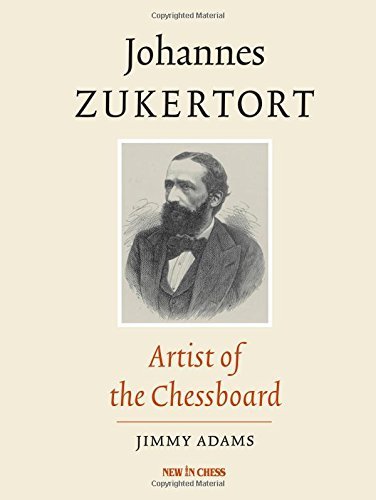
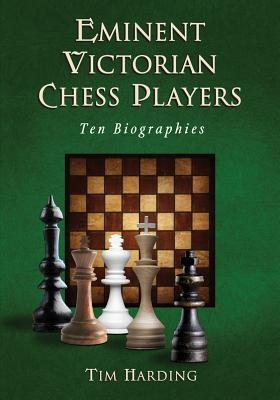
Happy Diamond Wedding Anniversary Michael & Jean Franklin (18-vi-1960)
We send best wishes to Michael & Jean (née Fey) Franklin, married sixty years ago this day, June 18th in 1960.
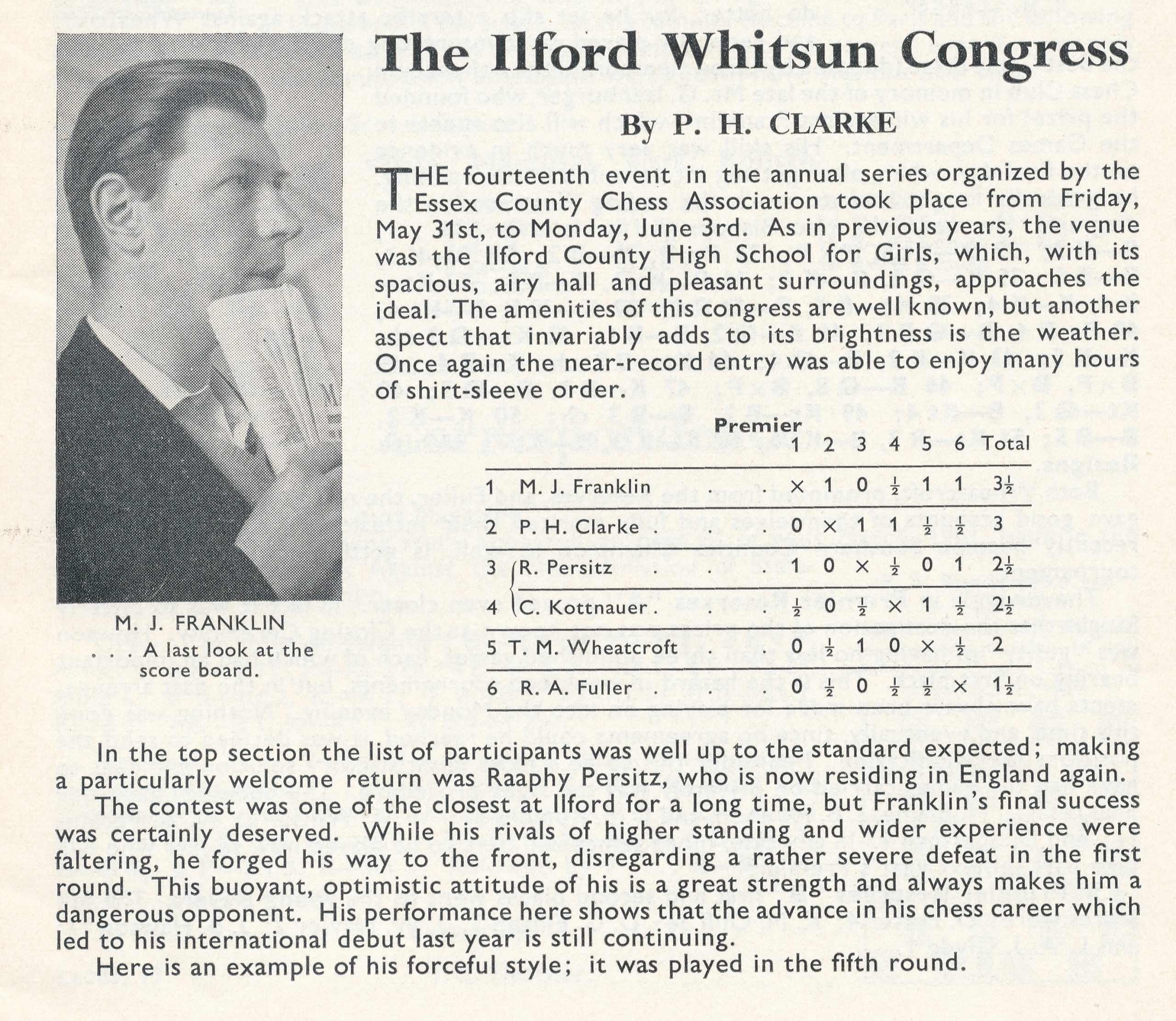
Michael played for a number of clubs in recent years, viz :
Richmond & Twickenham
Coulsdon CF
Surrey CCA
4NCL Richmond
4NCL Bristol
Richards Butler
Michael became a FIDE Master in 1980 and achieved his highest rating in the Elo era of 2345 in January 1979.

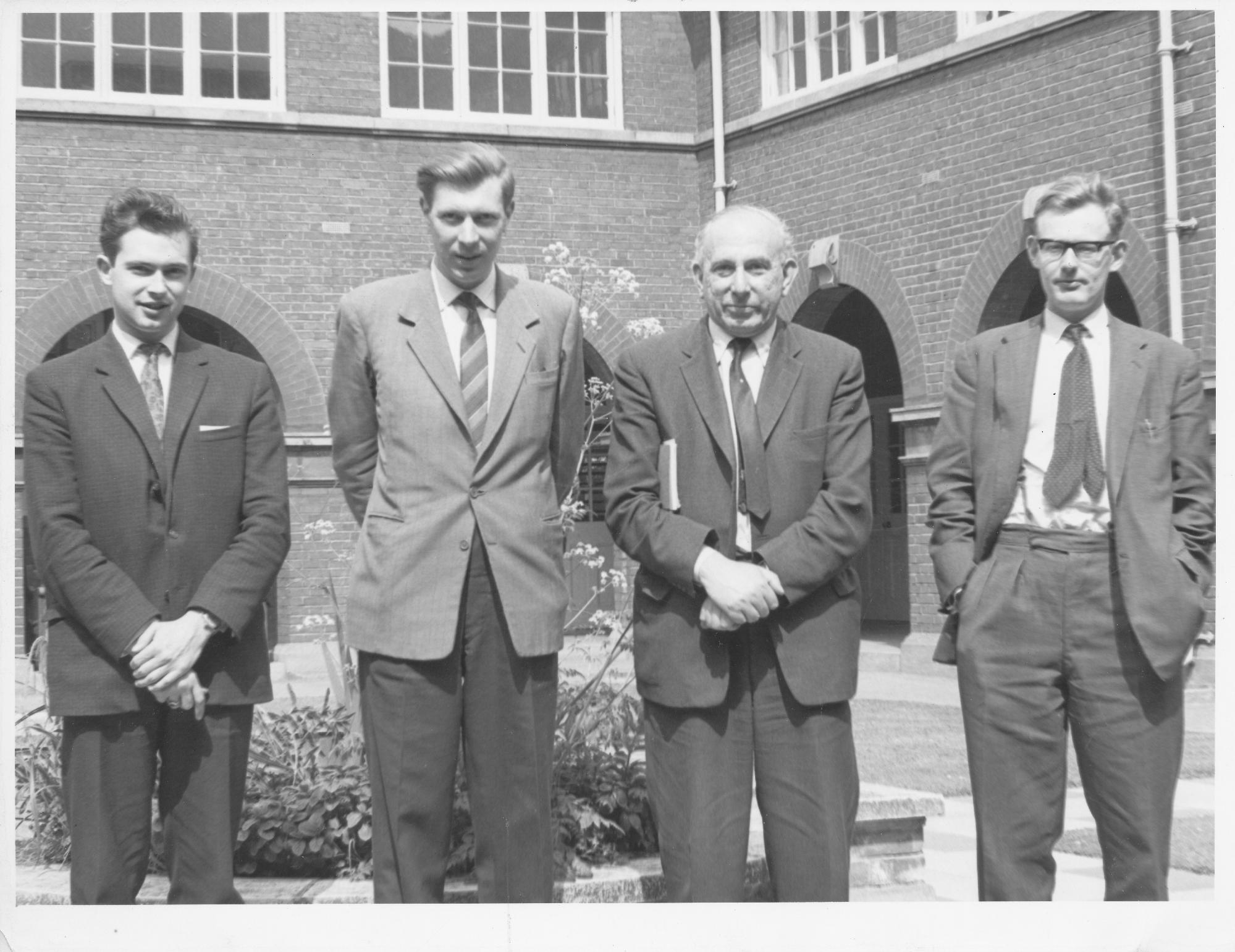

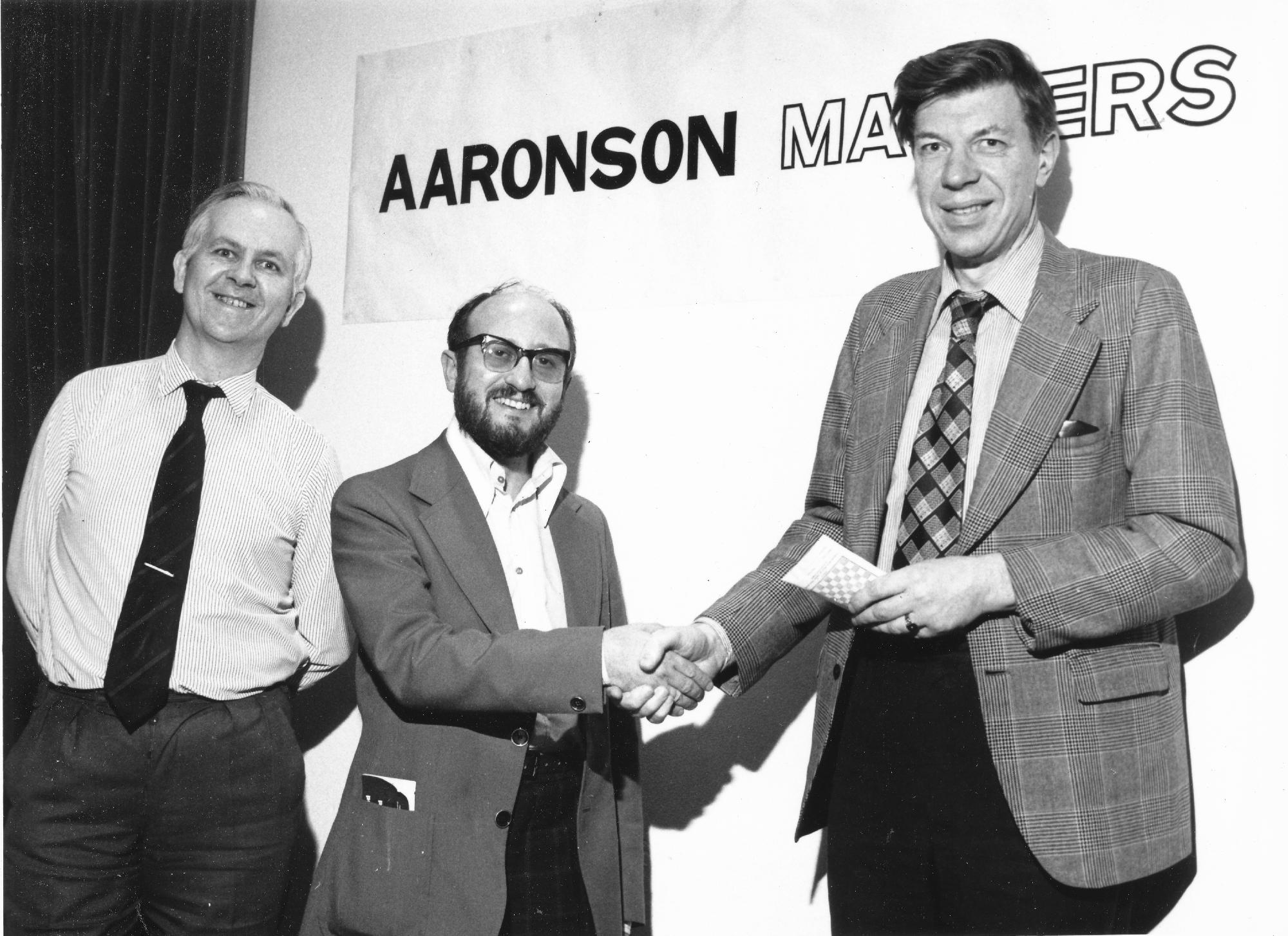
We are grateful to Leonard Barden for these words produced at short notice :
“Michael made his name as a young player first by his successes in the Saturday evening Gambit Guinea speed events at the Gambit chess cafe in Cannon Street which he often won ahead of master level rivals. He remained a strong speed player all his life.
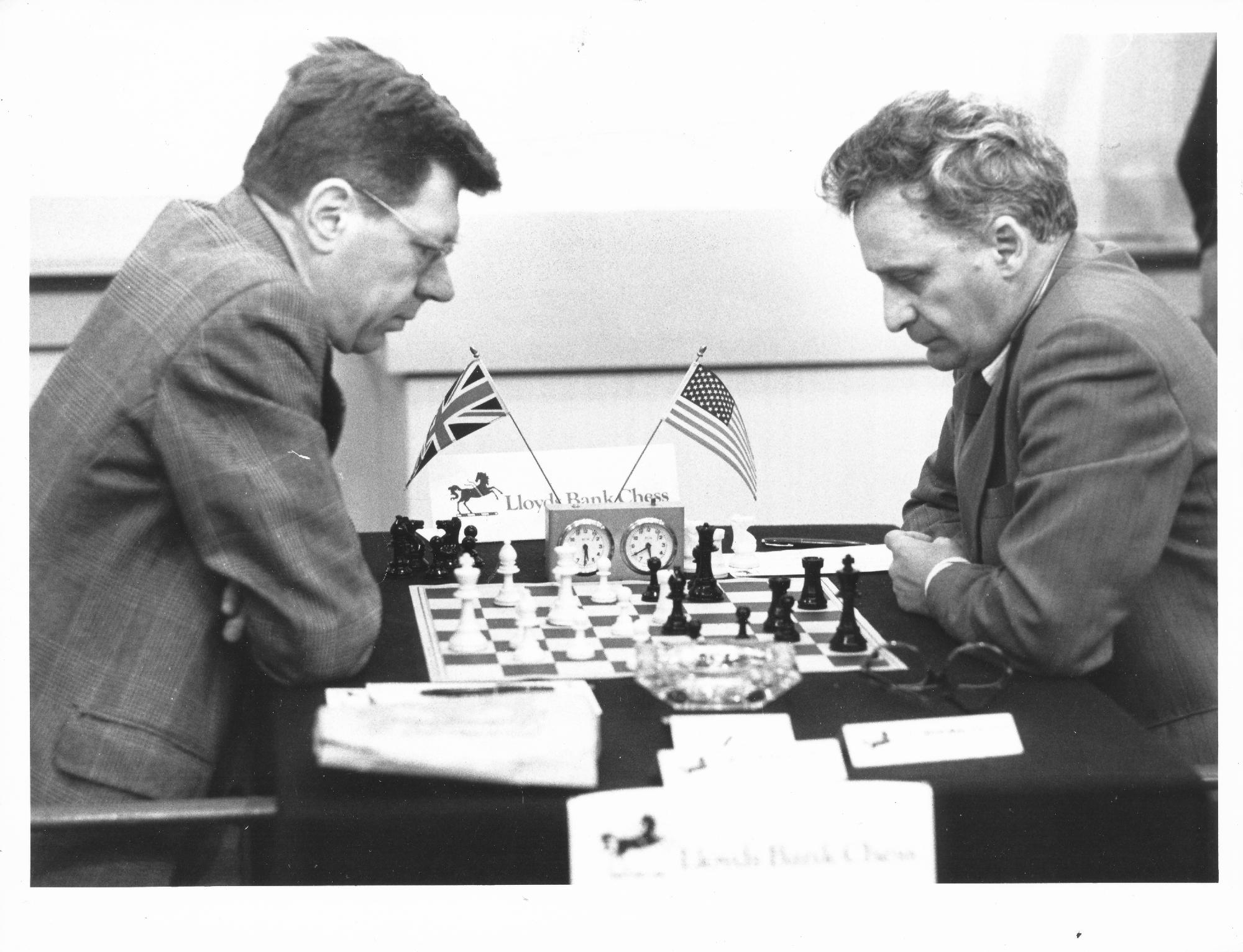
Aaronson Masters at Harrow 1978, was his best individual success, sharing first place with IM Aldo Haik of France with (I think) an IM norm.
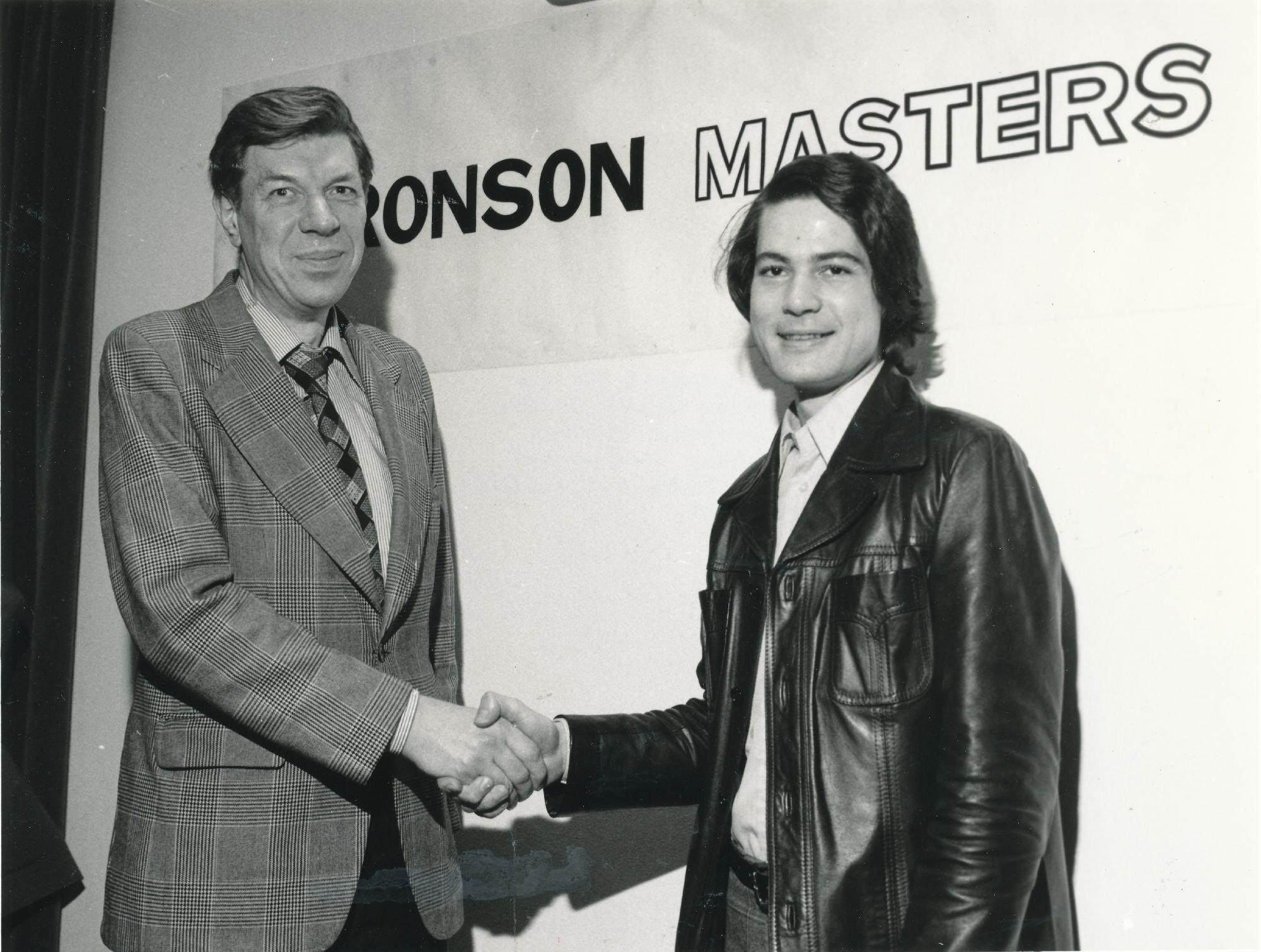
Michael was a regular British championship, Surrey, Hastings and London League player (forget club, Richmond? Clapham Common?) and was one of the first to play the London System (d4/Bf4) as as his regular opening with white.
He also had success as Black with the O’Kelly Sicilian 1.e4 c5 2.Nf3 a6.
When Surrey won the counties championship a few years back they took the trophy specially to Michael’s home in Norbury, such was their regard.
Michael’s work career was in the Patent Office and he retired when they introduced computers as he doesn’t like them and does not use the internet at all.”
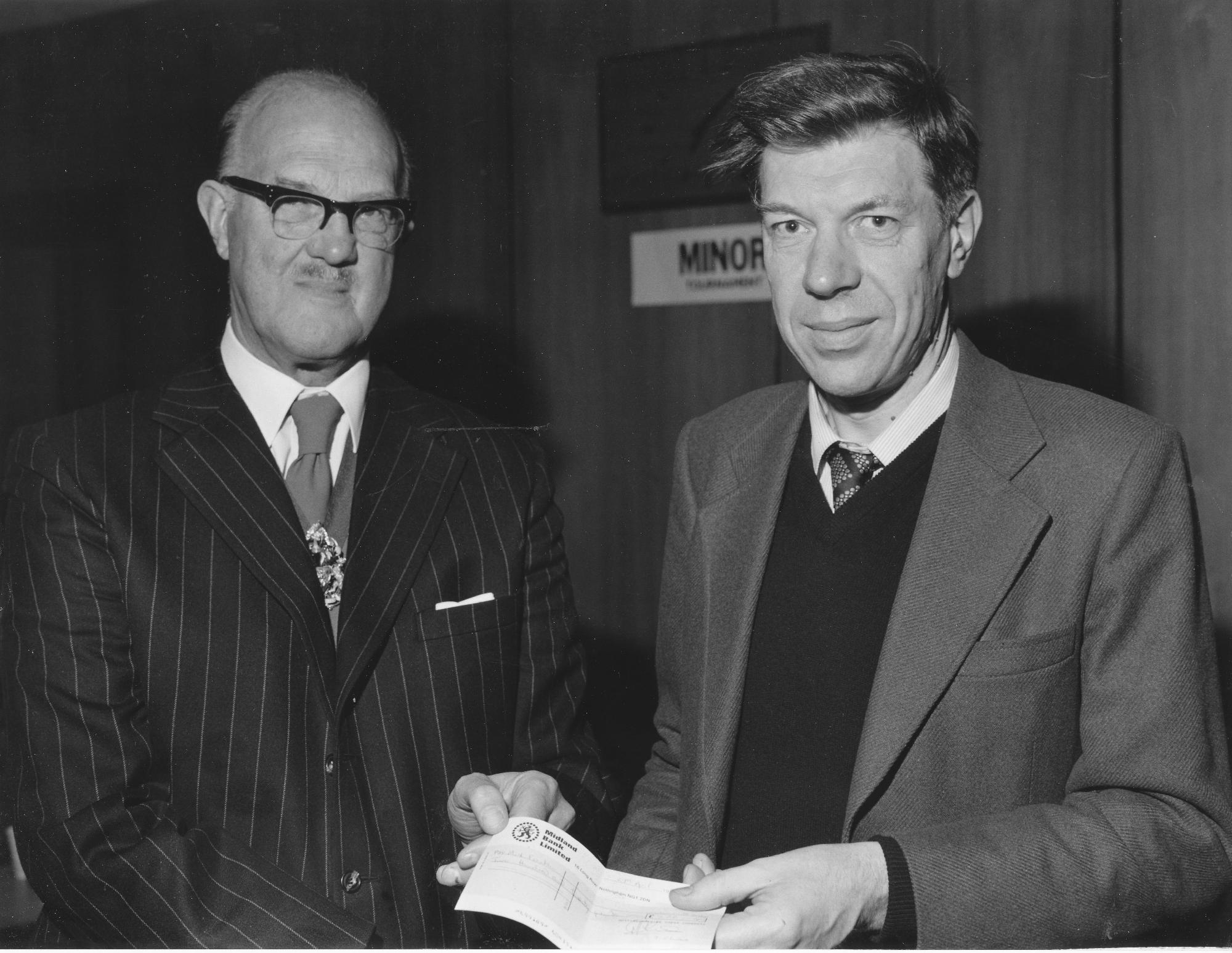
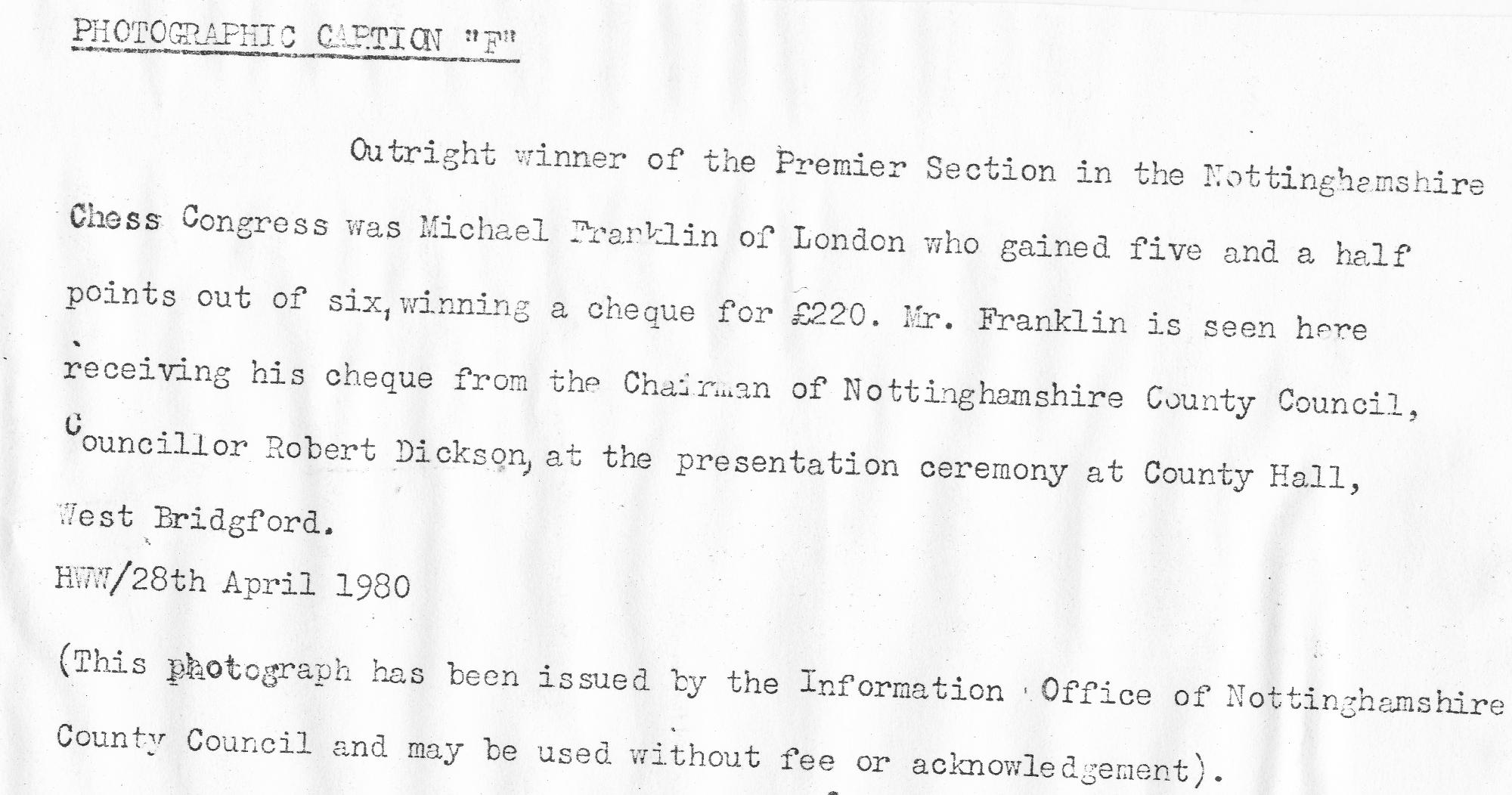
Remembering Henry Buckle (24-xi-1821 29-v-1862)
We remember Henry Thomas Buckle (24-xi-1821 29-v-1862)
His Wikipedia article is here
An interesting article by Ray Keene
From The Encyclopedia of Chess by Anne Sunnucks :
“One of the leading British players of his day and an eminent historian. Buckle was born in Lee, Kent on 11th November 1821., the son of a shipowner. From birth he was extremely delicate and his health prevented him from having a normal education. He was taken away from school at the age of 14 and three years later went into his father’s business. His father’s death in 1840 made Buckle independent and he gave up his business career and visited the continent for about a year, playing chess in Paris and Berlin. Going abroad again in 1843, Buckle spent most of his time studying languages and within seven years had learned to speak seven languages and to read 12 others.
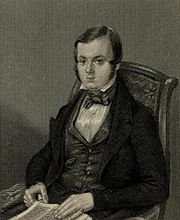
Buckle rarely played chess matches, because of the intense dislike of the slow rate at which they were played in those days. However, he played a match against Kieseritzky in 1848, which he won+4 -3 =1/ After this victory, he realised that his health would not stand up to serious play and he never again attempted it. In 1851, he played a number of games with Anderssen, who considered that he was one of the strongest players he had ever met. Buckle was a regular visitor to “The Divan”, where he delighted in his favourite form of the game, giving heavy odds.
After his match with Lowenthal, Buckle turned his attention to his History of Civilisation. The first section of this work started to appear in 1857 but the major portion was published posthumously.
Buckle died of typhoid fever in Damascus on 29th May 1862.”
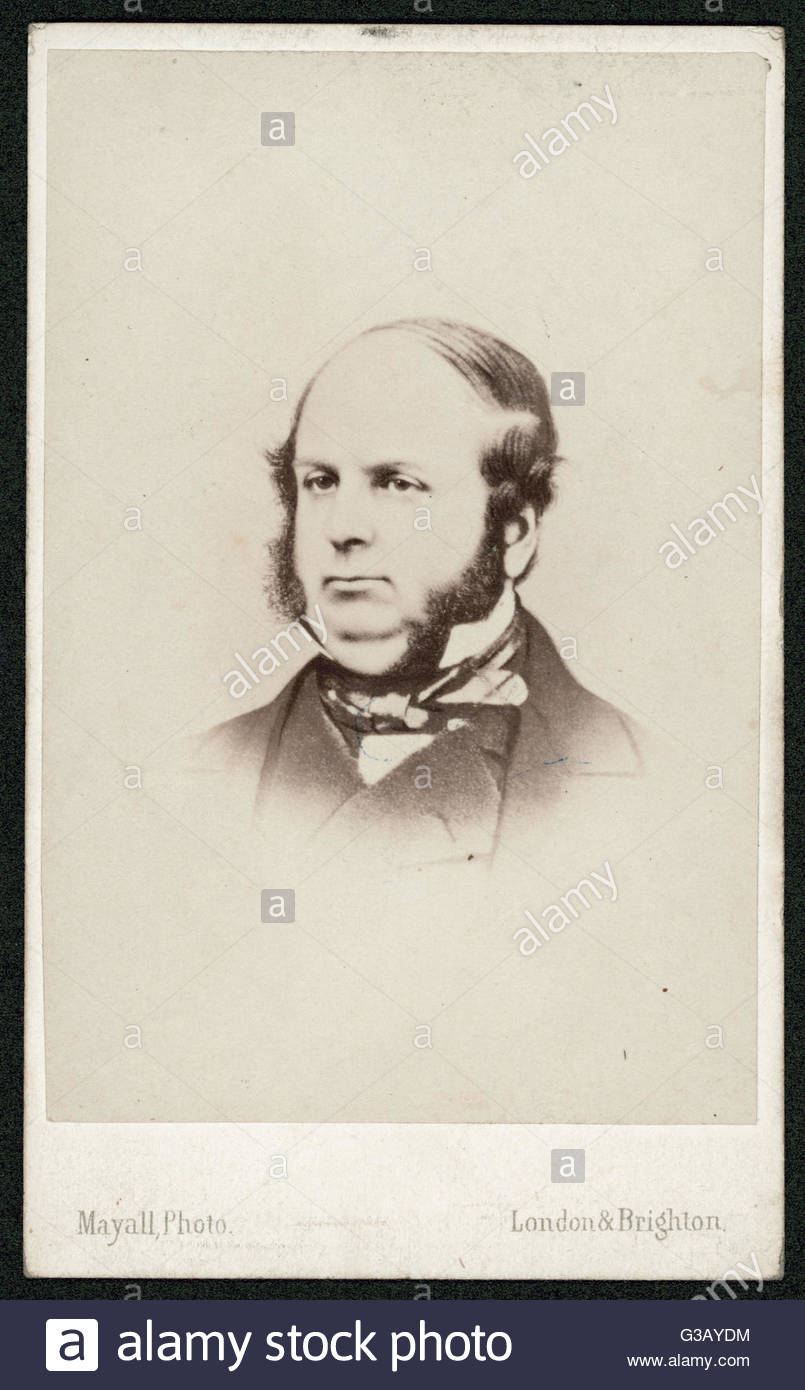
and from The Oxford Companion to Chess by Hooper & Whyld :
“English player, historian. He is usually regarded as second among English players only to Staunton during the 1840s; Steinitz , however, regarded Buckle as the better player. In 1843 Buckle won a match against Staunton, who conceded pawn and move ( + 6=1), and in 1848 he defeated Kieserltzky ( + 3=3—2). He won a knock-out tournament in London 1849, defeating Williams (+2) in the second round. In 1851 Buckle defeated Lowenthal (+4=3 — 1) and held his own in a series of friendly games against Anderssen who declared him to be the strongest player he had ever met.
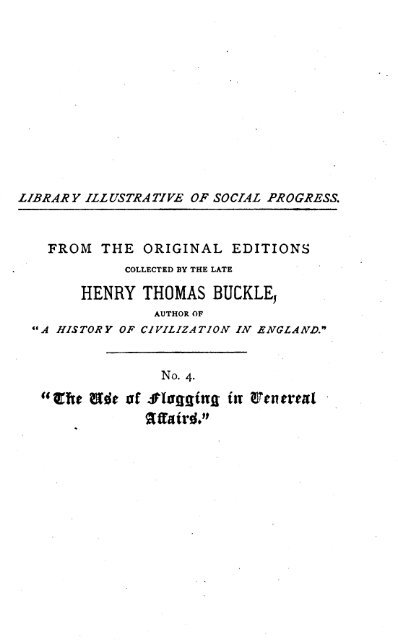
In his youth Buckle suffered ill-health which interfered with his schooling, and on account of which he was often sent abroad to fairer climates. Nevertheless he read widely, successfully educating himself and learning to speak seven languages. His father, a merchant, died in 1840 leaving him an ample fortune. In the 1850s Buckle largely gave up serious chess in favour of literary pursuits and began his great work, for which he is still remembered, A History of Civilization in England, the first two volumes of which were published in 1857 and 1861. At Damascus, on one of his many trips abroad, he contracted a fatal illness, allegedly crying as he died “My book! I haven’t finished my
book.”
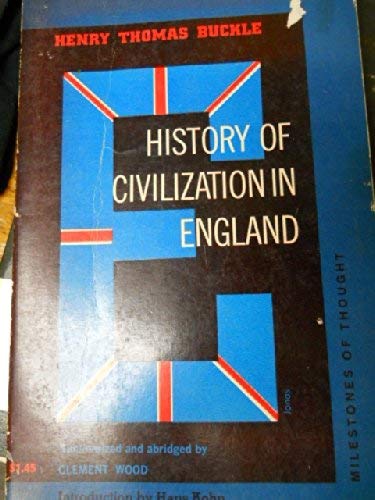
Remembering FM Neil Carr (10-iii-1968 25-v-2015)
BCN remembers FM Neil Leslie Carr (10-iii-1968 25-v-2015)
This was written about Neil aged 10 prior to the Spassky vs the BCF Junior Squad simultaneous display in 1979 :
“Manor Junior and Barking. Rating 152. World’s best 10 year old. Standard under-10 champion, 1977 and 1978. British under-11 champion, 1978. Defeated Russian grandmaster Kotov in clock match, 1978.”
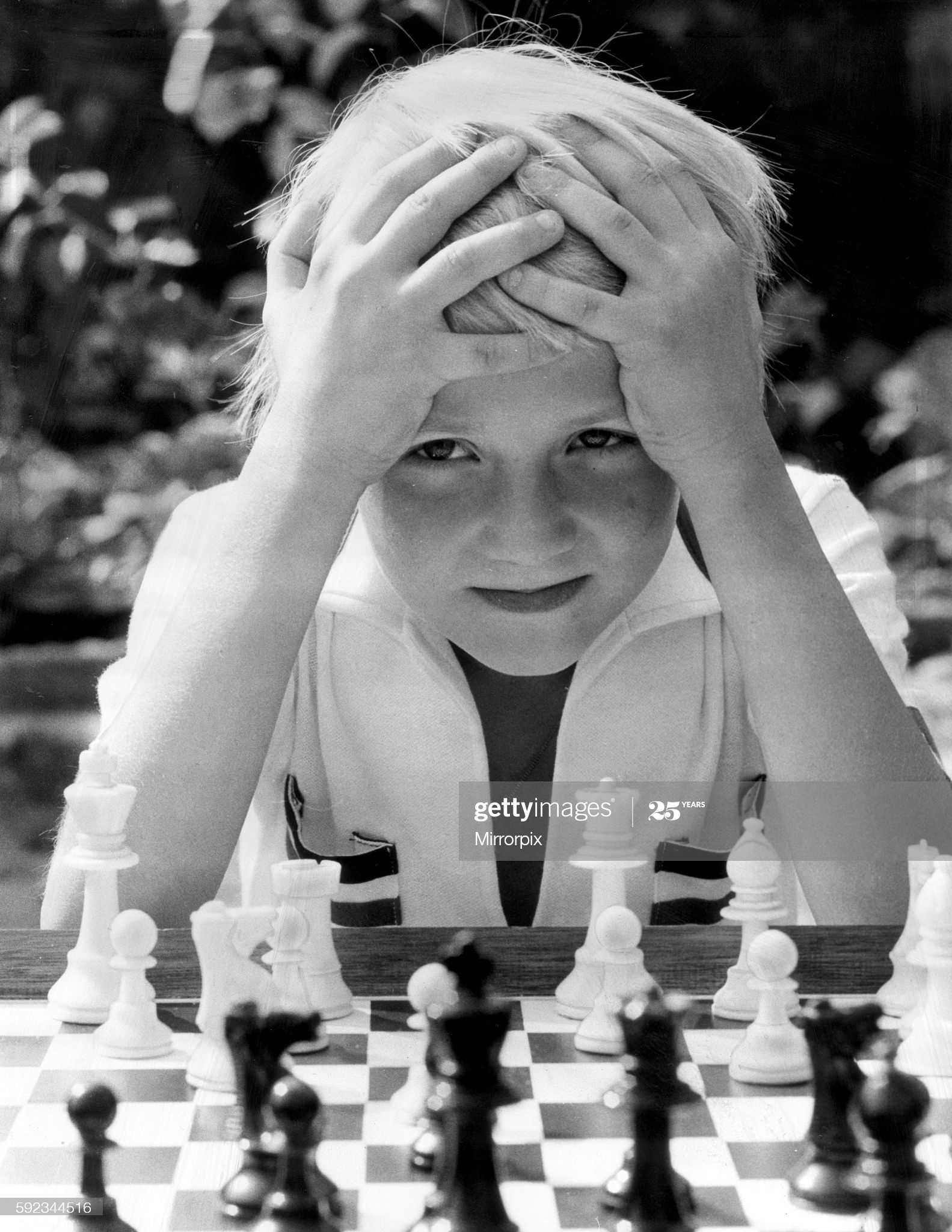
26th August 1976. (Photo by Daily Mirror/Mirrorpix/Mirrorpix via Getty Images)
Neil played for East Ham, Ilford and then London Central YMCA (CentYMCA) chess clubs.
He became a FIDE Master in 1985.
Here is his obituary from Stewart Reuben
Here is an article from Kingpin Magazine by Jon Manley
Here is an article from EssexChess
The Neil Carr Scholarship Prize
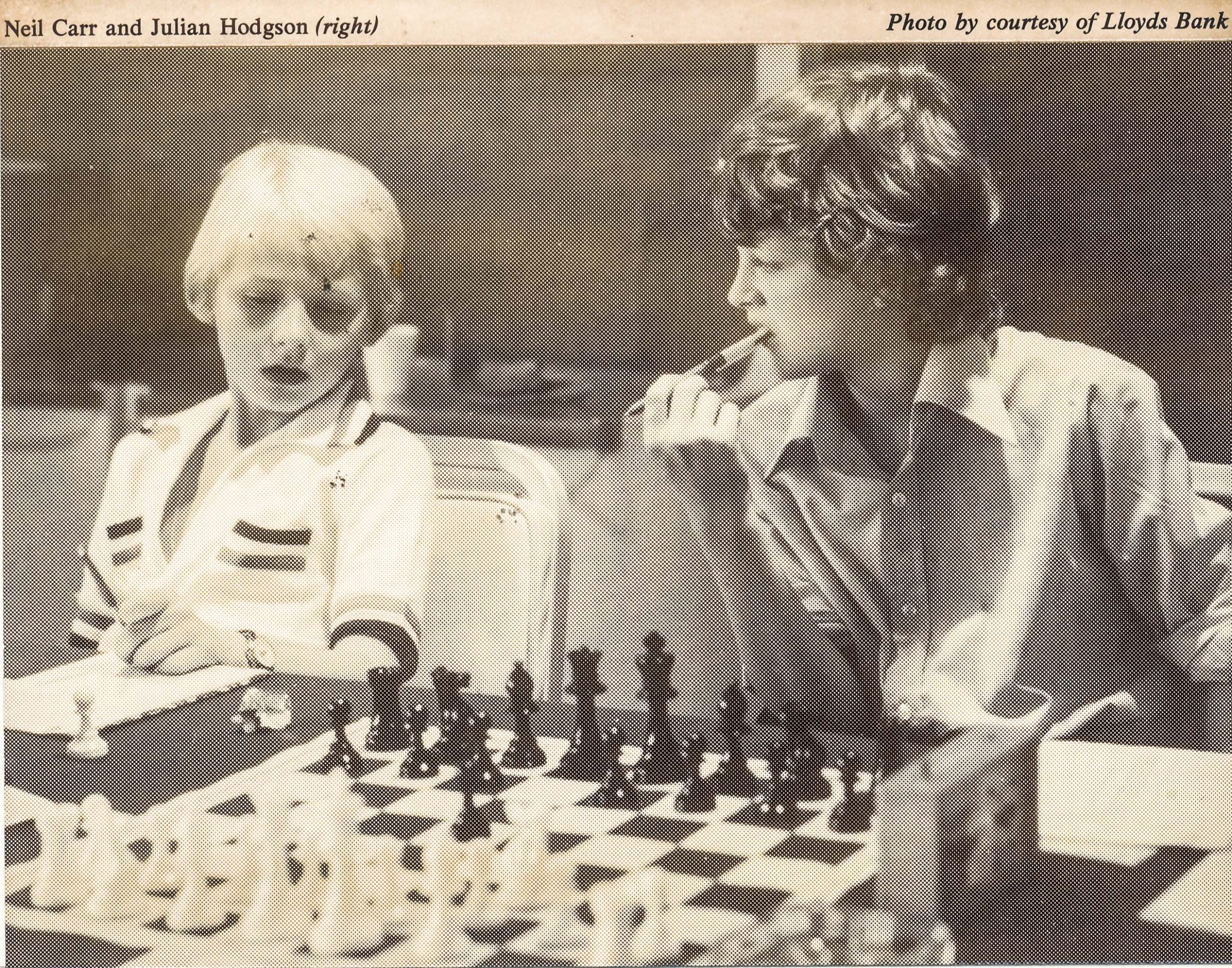
Here is a game courtesy of Kingpin (Jon Manley) & the Ilford Recorder
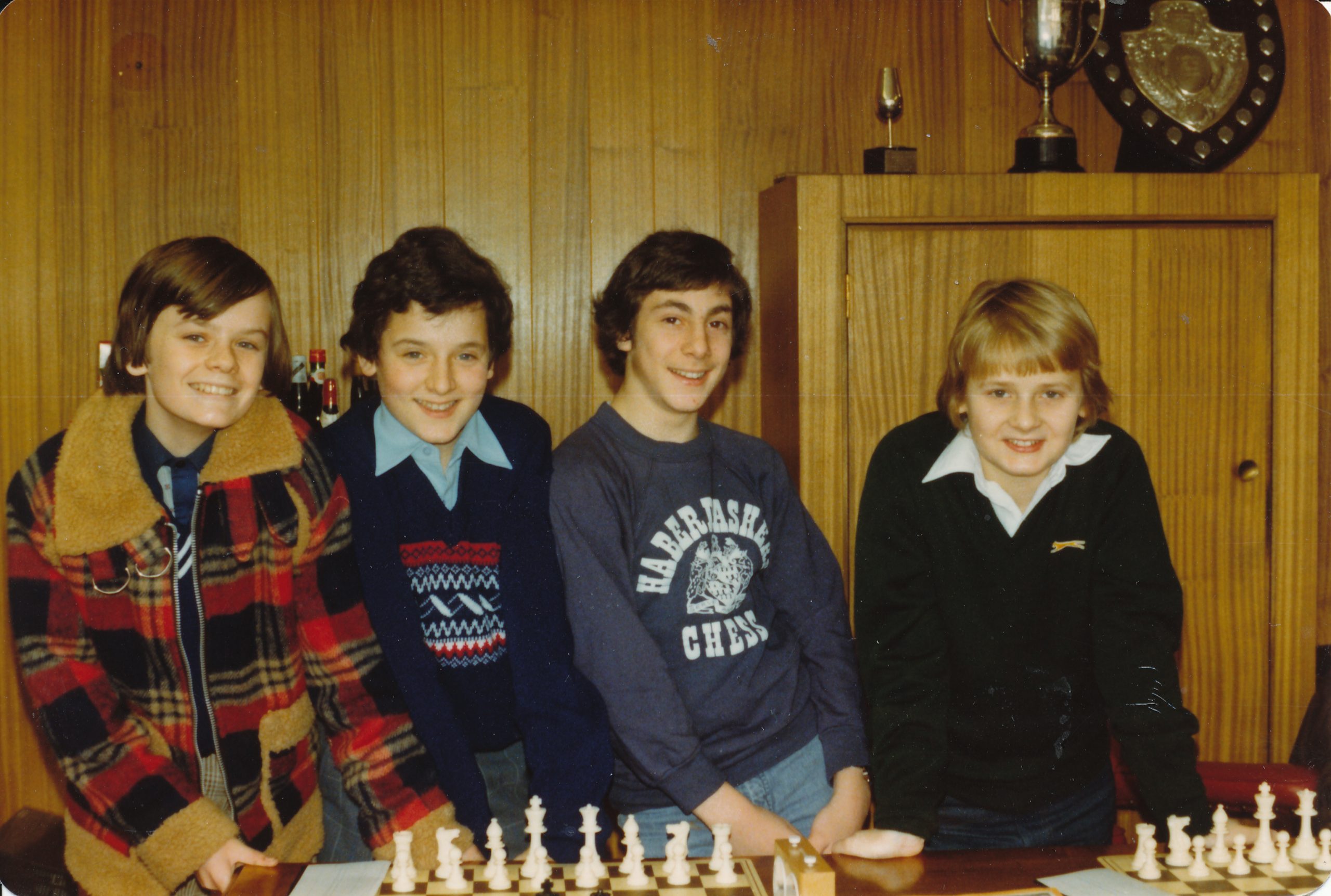
Here is a tribute from long time friend and London Central YMCA fellow club member, IM Andrew Martin :

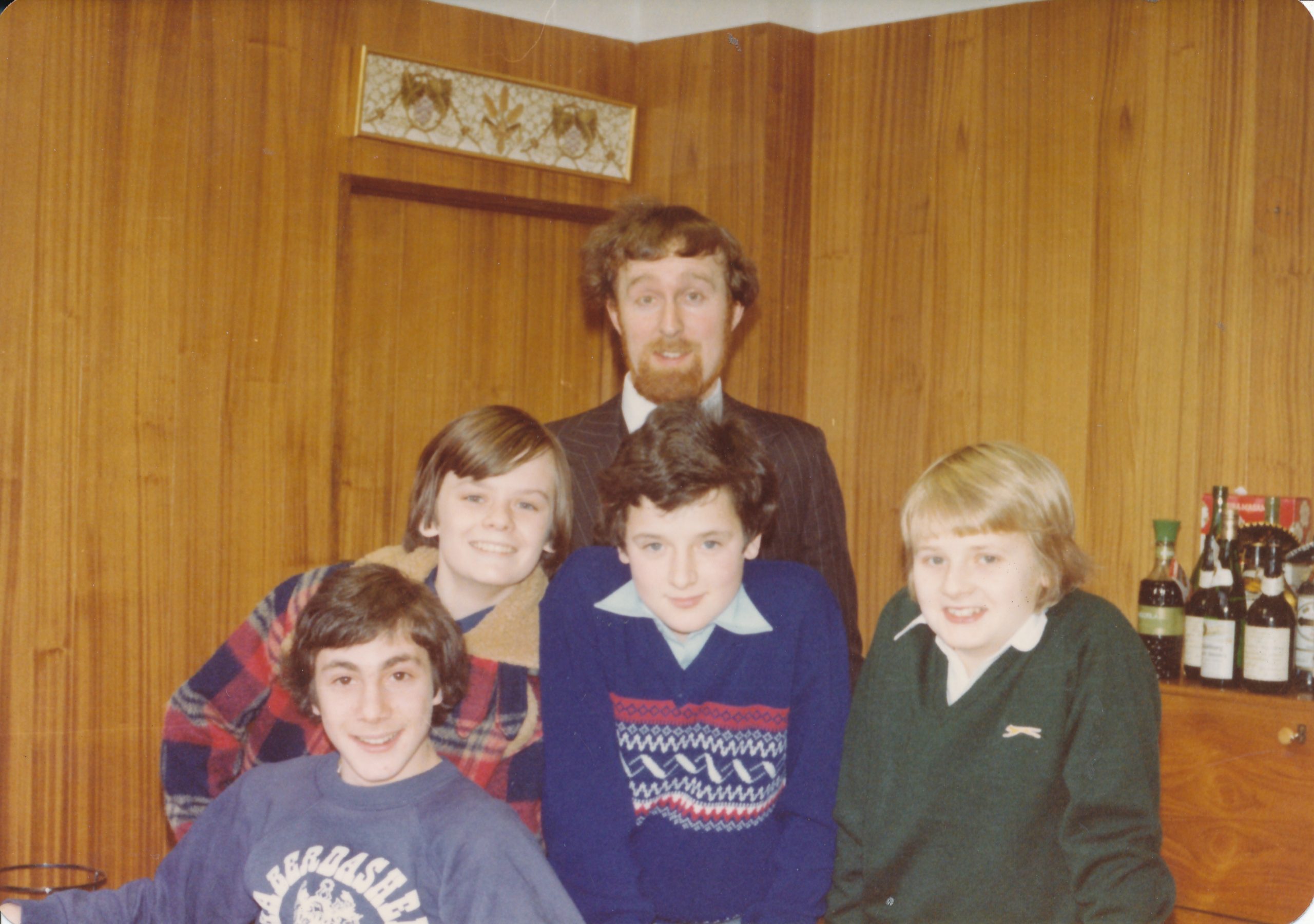
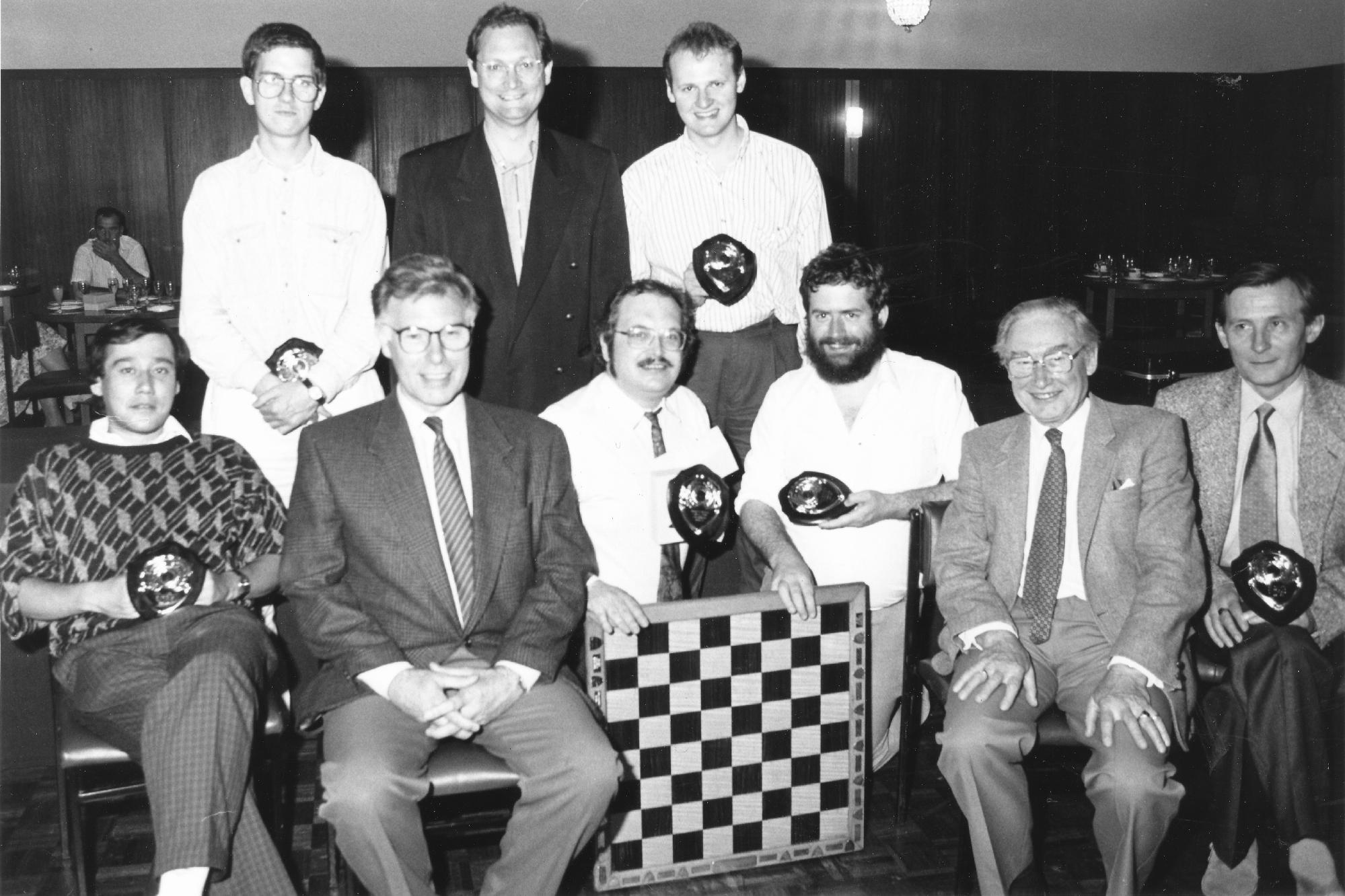
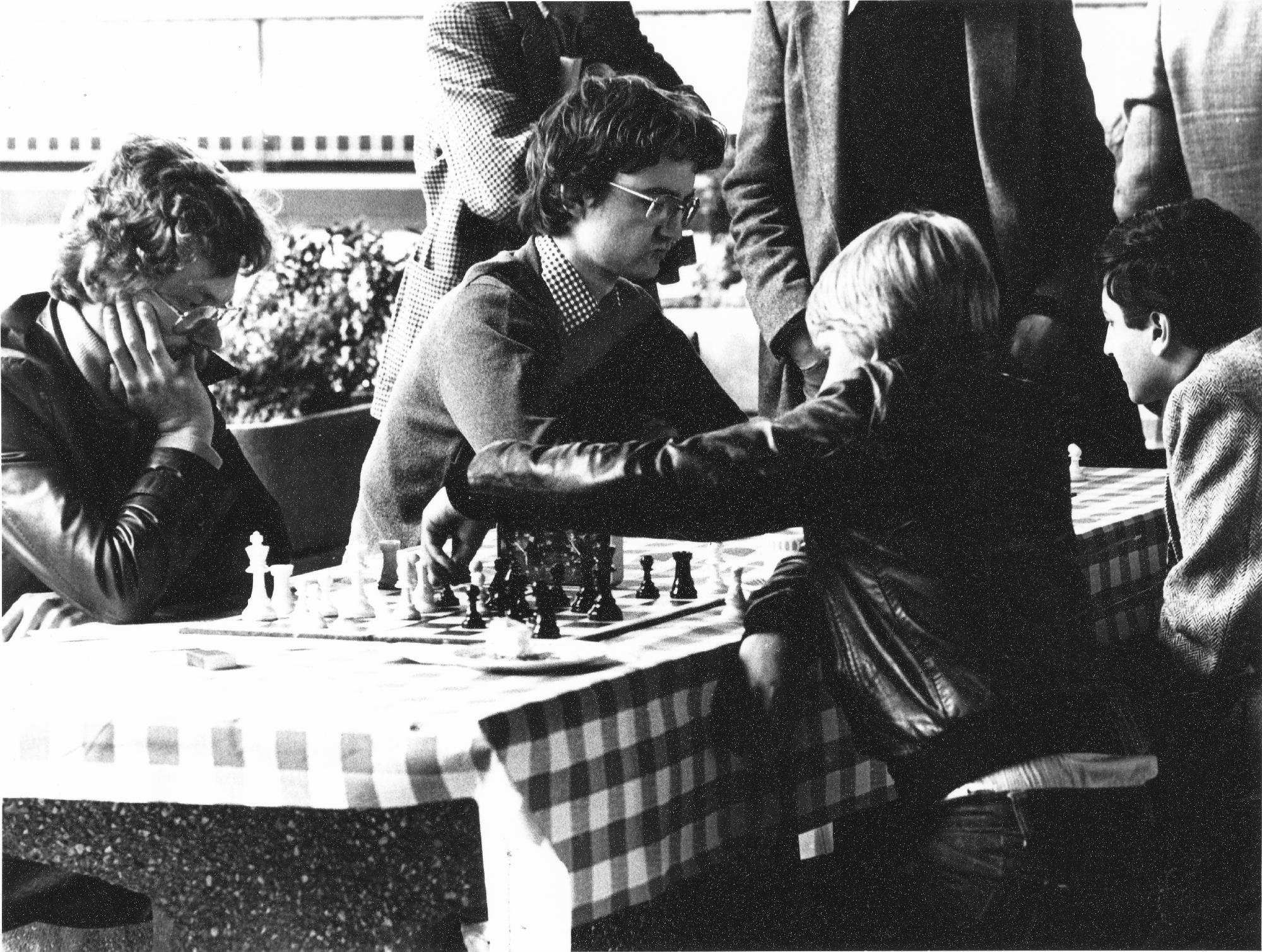
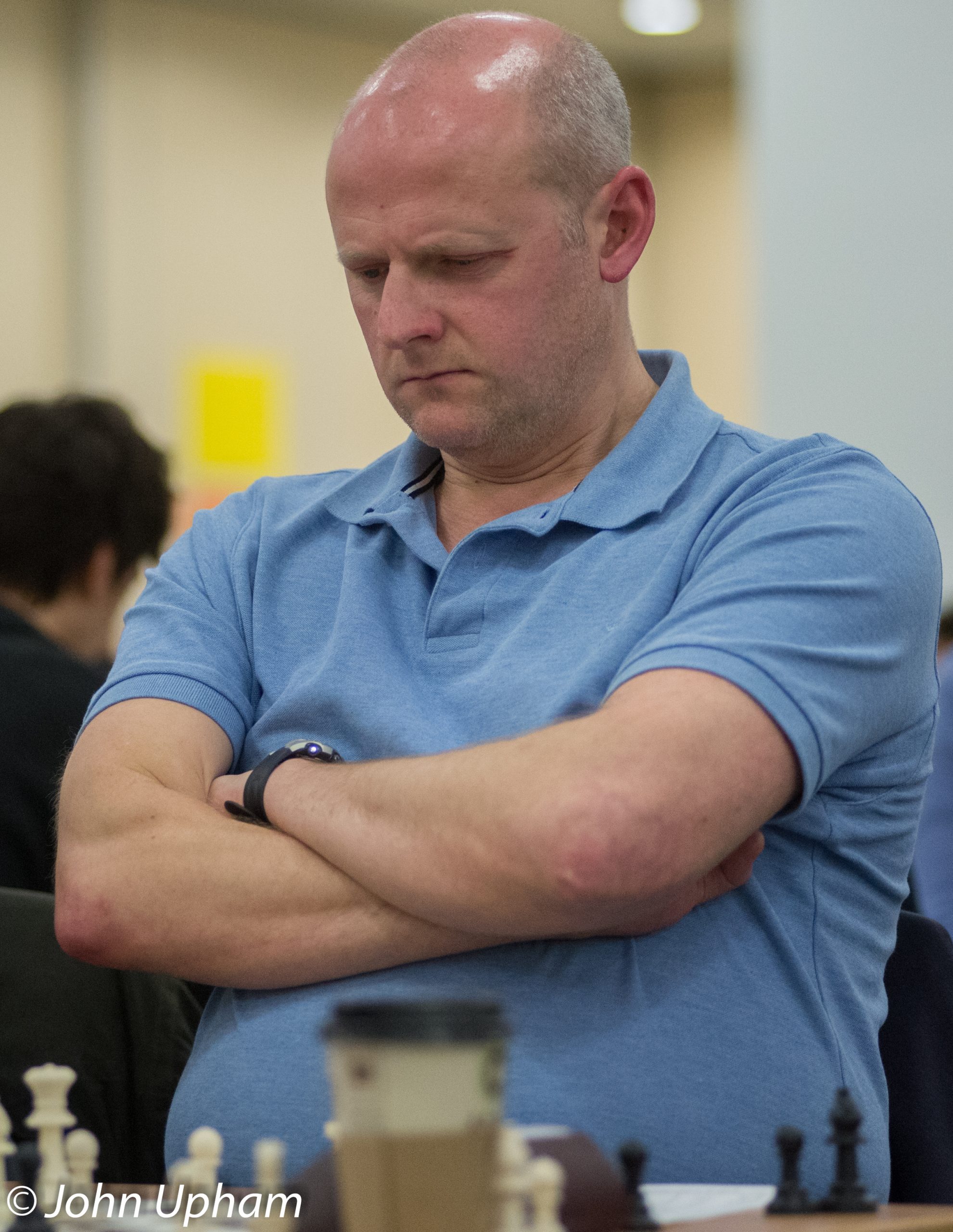
Sultan Khan : The Indian Servant Who Became Chess Champion of the British Empire
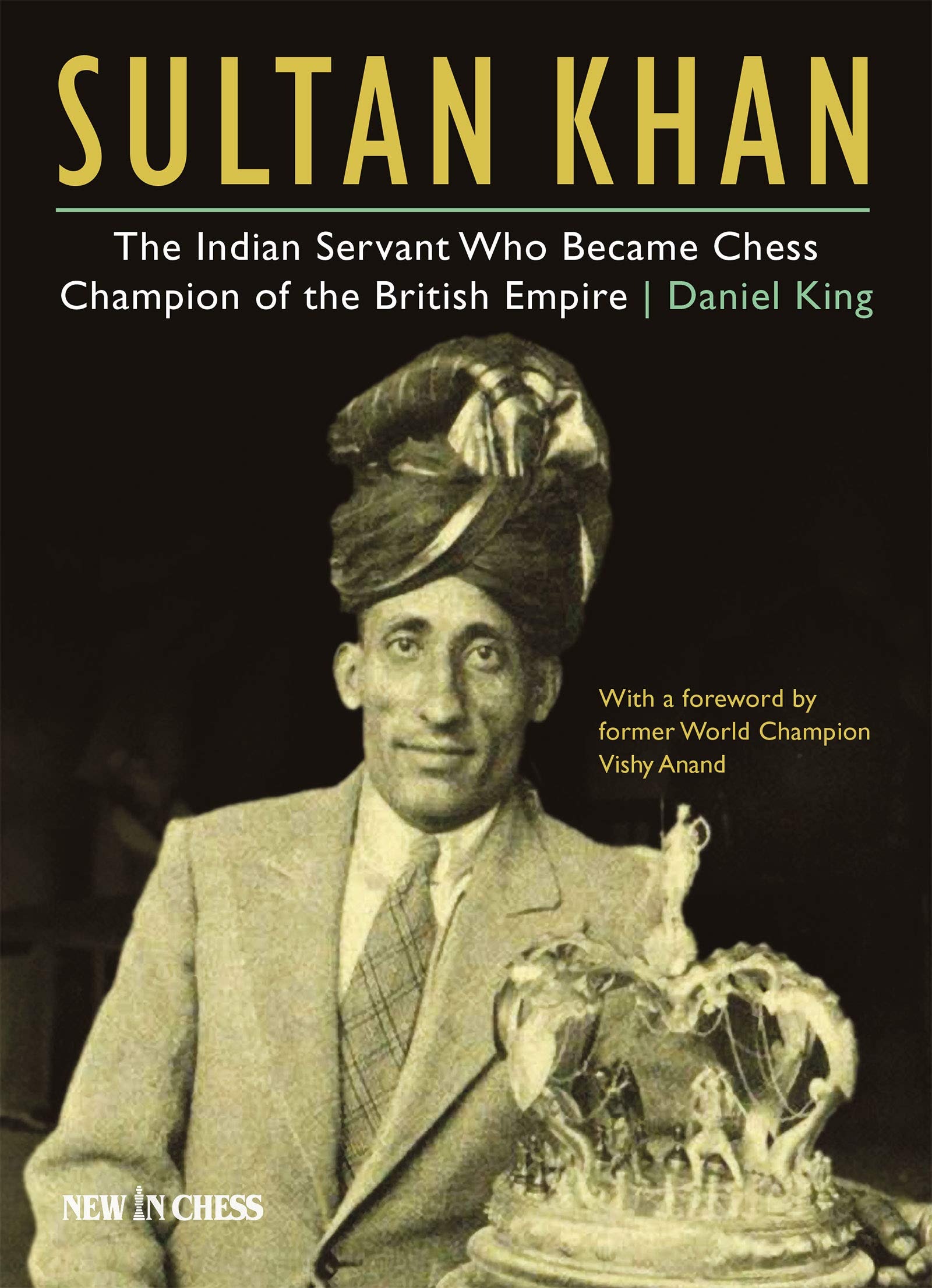
Sultan Khan : The Indian Servant Who Became Chess Champion of the British Empire : Daniel King

“Daniel King (1963) is an English grandmaster, coach, journalist and broadcaster. He has written 16 chess books on topics ranging from opening preparation to the self-tutoring How Good is your Chess? and Test Your Chess.”
From the rear cover :
“Sultan Khan arrived in London in 1929. A humble servant from a village in the Punjab, he created a sensation by becoming the British Empire champion. Sultan Khan competed in Europe with the leading chess players of the era. His unorthodox style often stunned his opponents, as Daniel King explains in his examination of the key tournaments in Khan’s career. King has uncovered a wealth of new facts about Khan, as well as dozens of previously unknown games. Now for the first time the full story can be told of how Khan was received in Europe, of his successes in the chess world and his return to obscurity after his departure for India in 1933.”
Daniel King, well known as a writer and broadcaster, here turns his hand to chess history, and one of the most fascinating stories our game has produced.
It would be remiss of me not to mention at the start that Sultan Khan’s family, whom the author chose not to consult, are very unhappy about the book. You can read a review by Dr Atiyab Sultan, Sultan Khan’s granddaughter, here.
Dr Sultan and her father also write about Sultan Khan here.
I’ll leave that with you: you can decide for yourself whether or not it will deter you from buying the book. I have my views but prefer to concentrate on the chess.
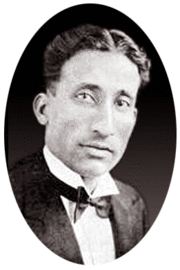
What we have is a collection of Sultan Khan’s most interesting games (in some cases only the opening or conclusion) with excellent annotations. It’s not a ‘Best Games’ collection: there are plenty of draws and losses. As you would expect from such an experienced commentator, King knows exactly what, and how much, to tell you. You’ll get clear and concise verbal explanations, with variations only when necessary: an approach entirely suited to Khan’s style of play.
Sultan Khan’s openings were sometimes very poor, even by the standards of the day, on occasion running into trouble by neglecting the essentials of development and king safety, and not always learning from his mistakes. You won’t find a lot of brilliant tactics and sacrifices in his games, either. But he excelled at manoeuvring, and was an outstanding endgame player, winning many points through sheer determination. It was these skills that enabled him to beat Capablanca, draw with Alekhine, and reach, according to Jeff Sonas, the world’s top ten.
Here’s his most famous game, which is treated to six pages of annotations in the book.
King offers a lot more than just the games, though. The descriptions of the events in which Sultan Khan participated are enlivened by contemporary reports from newspapers and magazines which portray a vivid picture of the chess world 90 years ago, and of how Khan was perceived within the chess community. Then as now, newspapers would sometimes send non-playing journalists to write a ‘let’s laugh at the weird chess players’ article. Here, for example, is a Daily Herald reporter visiting Hastings for the 1930-31 congress. “DRAWING THE LONG BROW AT HASTINGS”, chortled the headline. “Moving (sometimes) scenes at chess congress.” Yes, very droll.
Although Sultan Khan was a very popular member of the British chess community, much respected for his quiet and modest demeanour, remarks which would today be considered racist sometimes appeared in the press. The London Evening News on Hastings 1932-33: “Sultan Khan, the British Champion, of course, did well; but he is not English by birth, which makes a difference.”
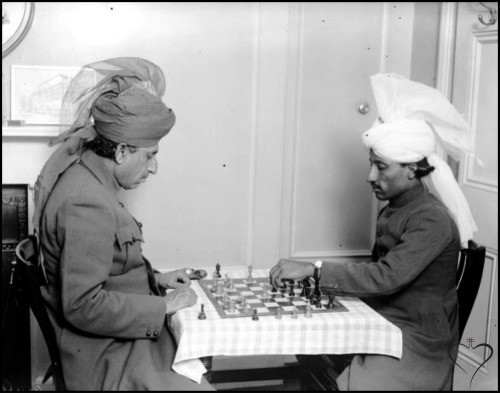
King also sketches in the political background behind Sultan Khan’s time in England: the discussions concerning the future of the Indian subcontinent which would eventually lead to independence and the partition in 1947. Writing as someone with embarrassingly little knowledge of the subject, I thought these sections of the book were written with sensitivity and impartiality, but, as the partition is still highly emotive today, I quite understand why others might take a different view.
My main problem with the book is the lack of indexing. There’s an index of names, but I’d also expect indexes of games and openings: something I’d consider essential for a book of this nature. While it was interesting to read something of the history of Western chess in India, a section on John Cochrane would have been useful. I noticed a couple of errors in tournament crosstables (pp 22 and 309), and on p322, EM Jackson mysteriously becomes EM Mackenzie (his middle name).
What you don’t get is a definitive and complete biography and games collection such as McFarland might publish, but Daniel King knows his audience well, and, from the chess perspective, does a thoroughly professional job. If you don’t feel strongly about Sultan Khan’s family’s criticisms, then this book is highly recommended, telling a story full of chess, human and historical interest.
You can see some sample pages on the publisher’s website.
Some more links for anyone interested in finding out more about Sultan Khan:
An article by chess.com blogger simaginfan (Neil Blackburn)
Edward Winter’s feature article about Sultan Khan
A short documentary from 1990 about Sultan Khan and Miss Fatima
Richard James, Twickenham 22nd May 2020

Book Details :
- Paperback : 372 pages
- Publisher: New In chess (1 Mar. 2020)
- Language: English
- ISBN-10: 9056918745
- ISBN-13: 978-9056918743
- Product Dimensions: 17 x 23.1 cm
Official web site of New in Chess


